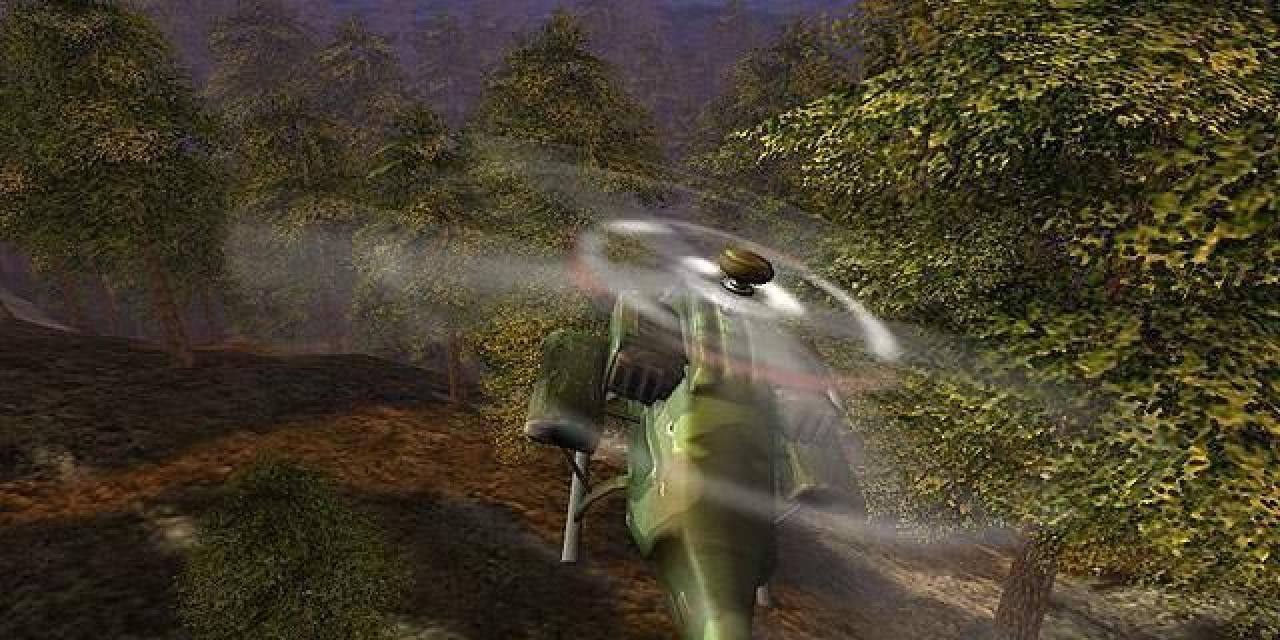
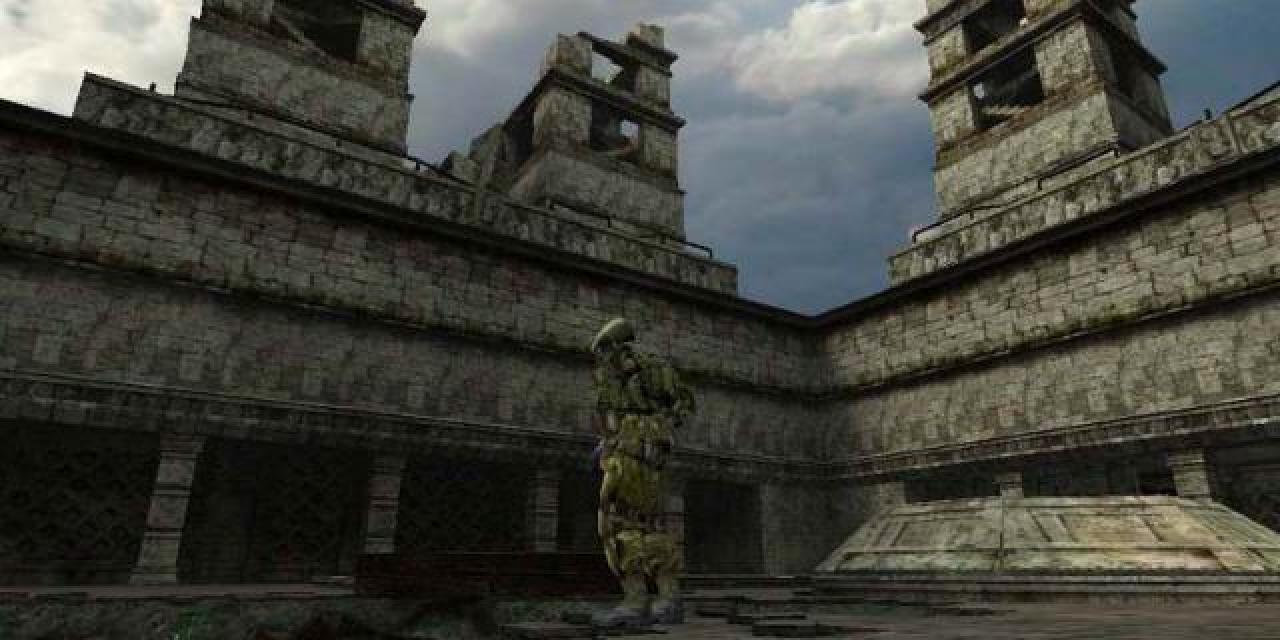
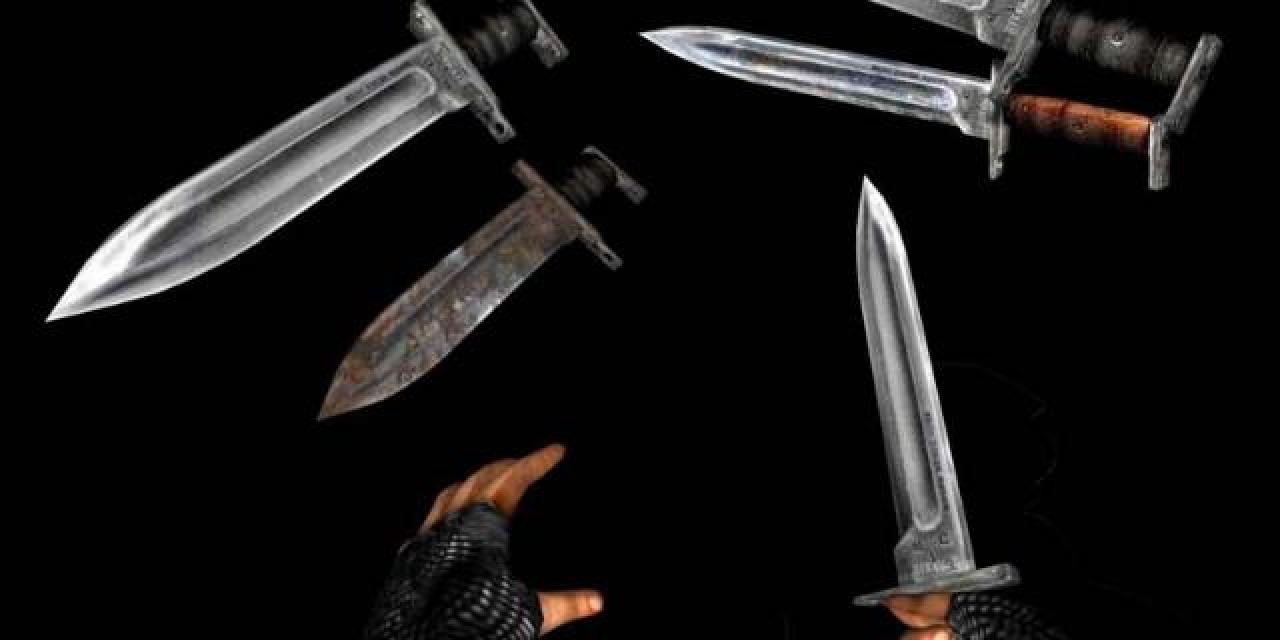
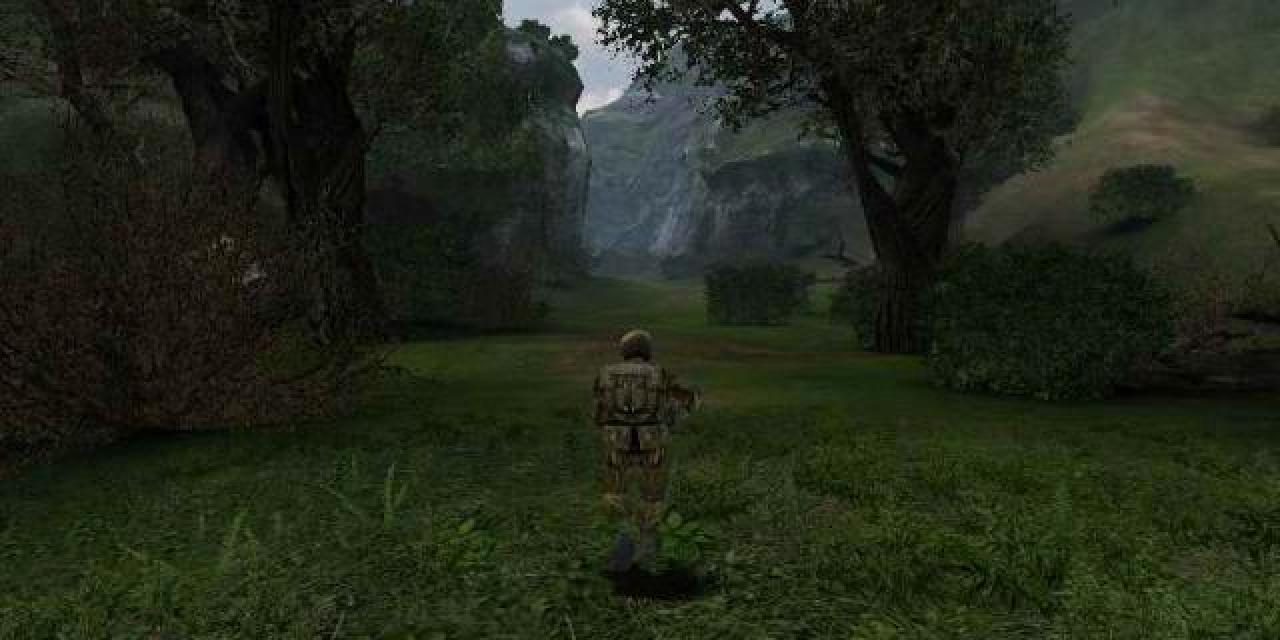
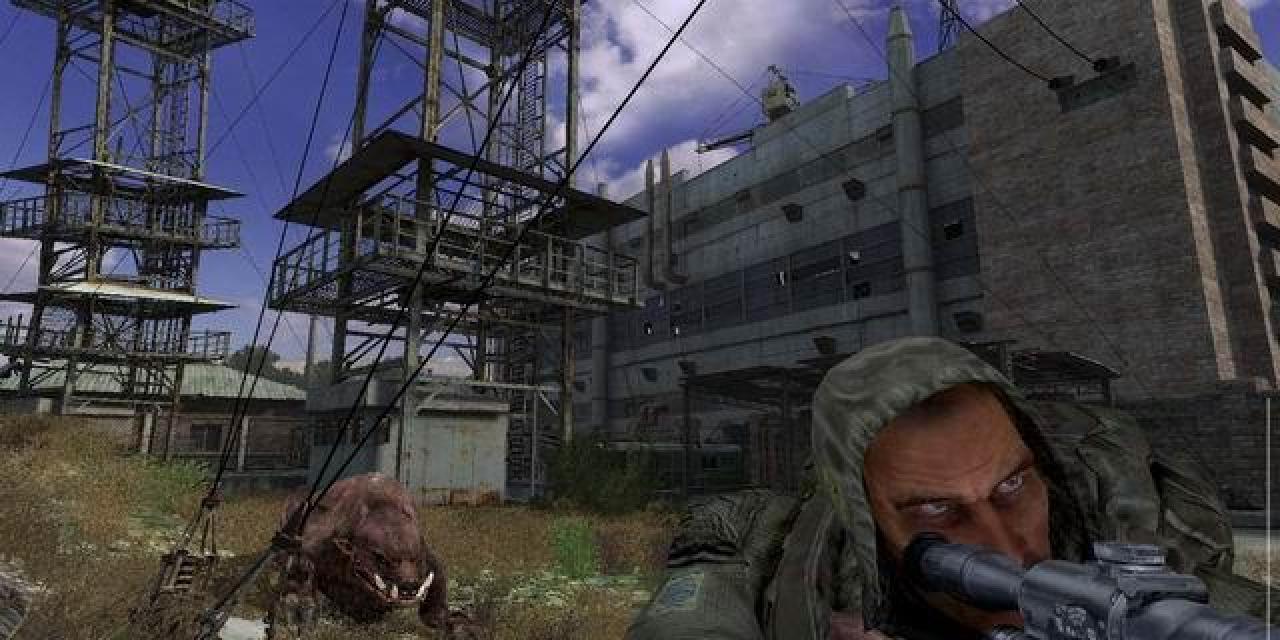

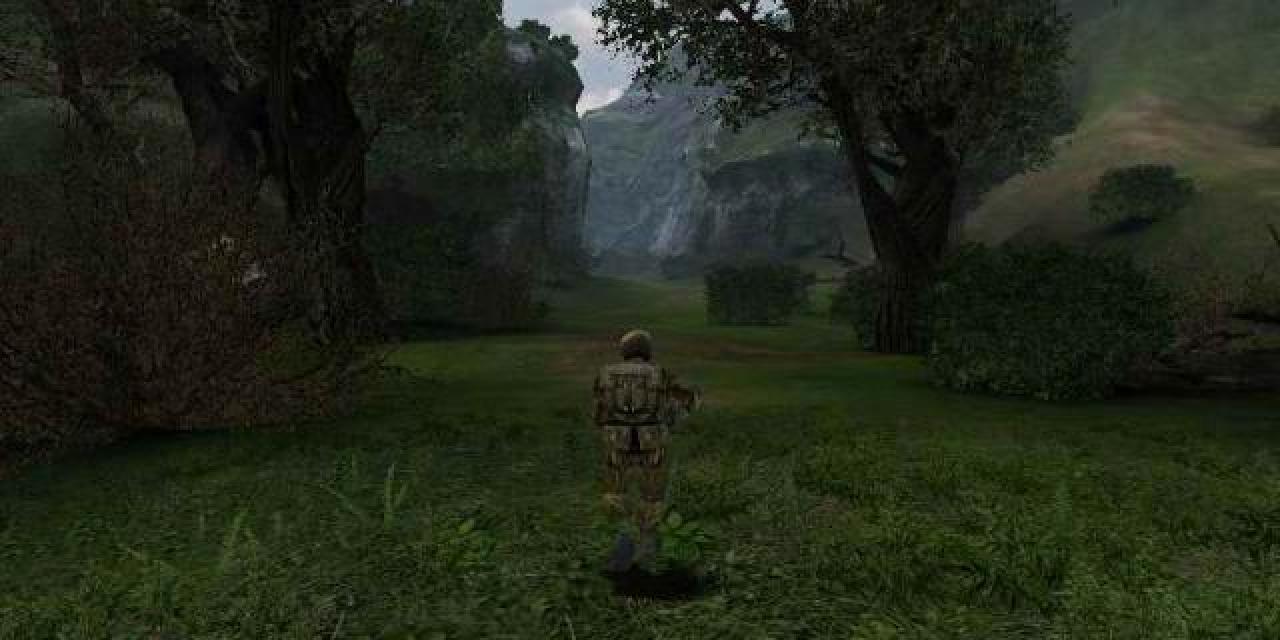
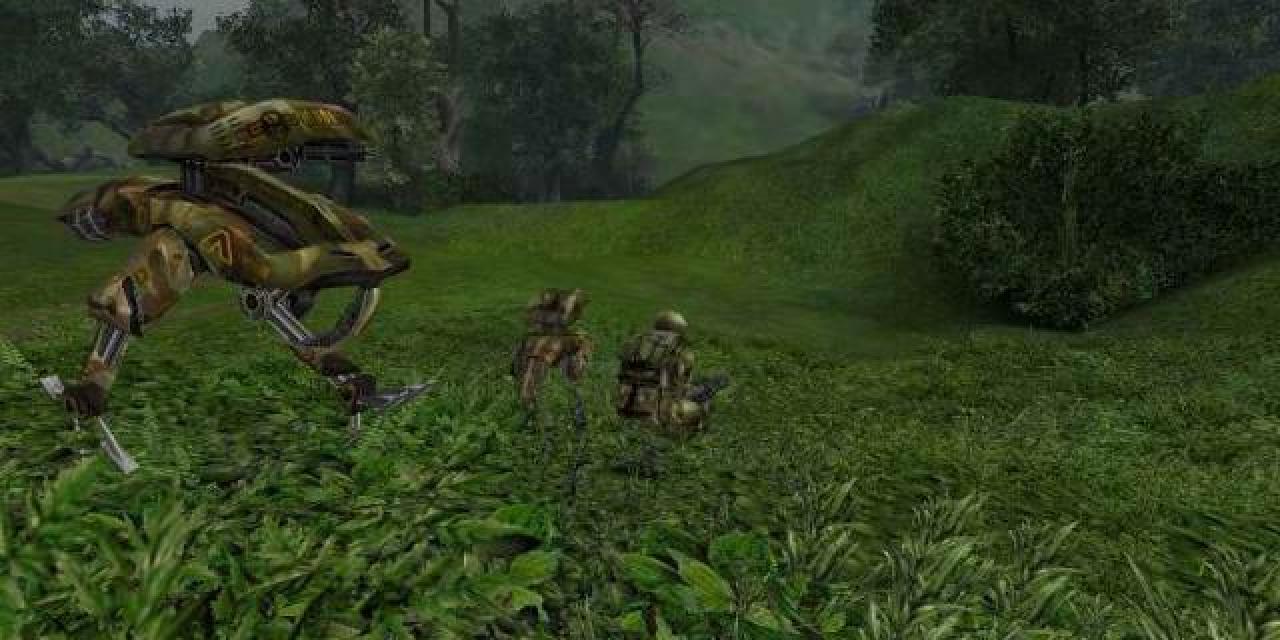
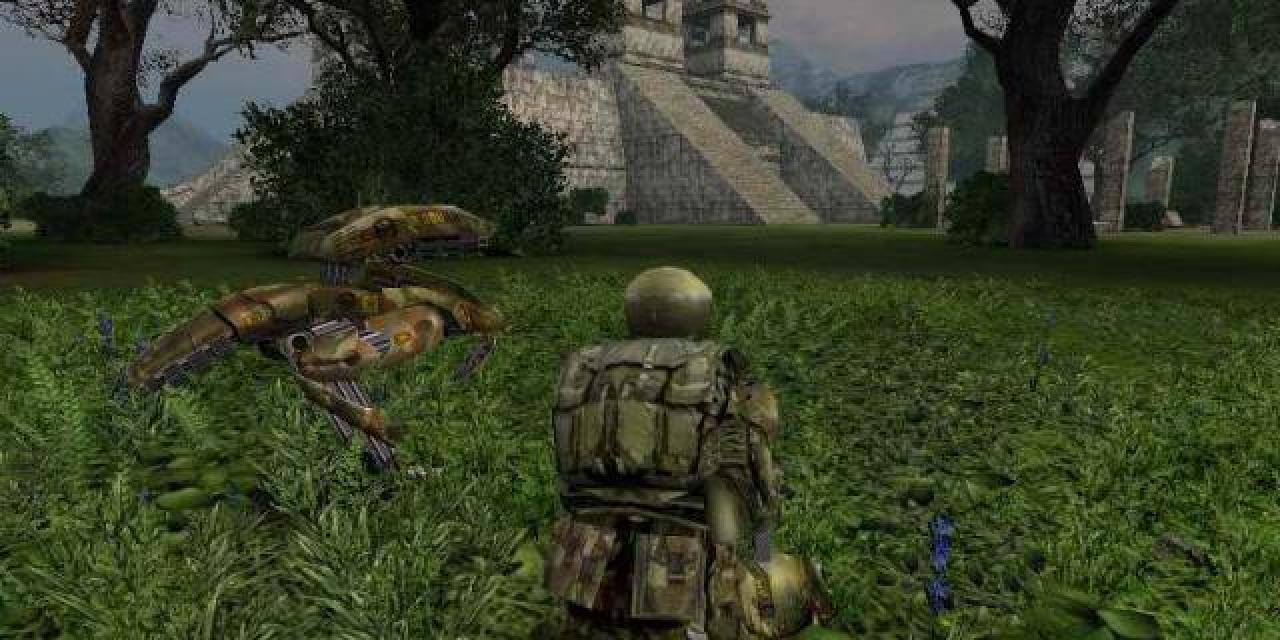
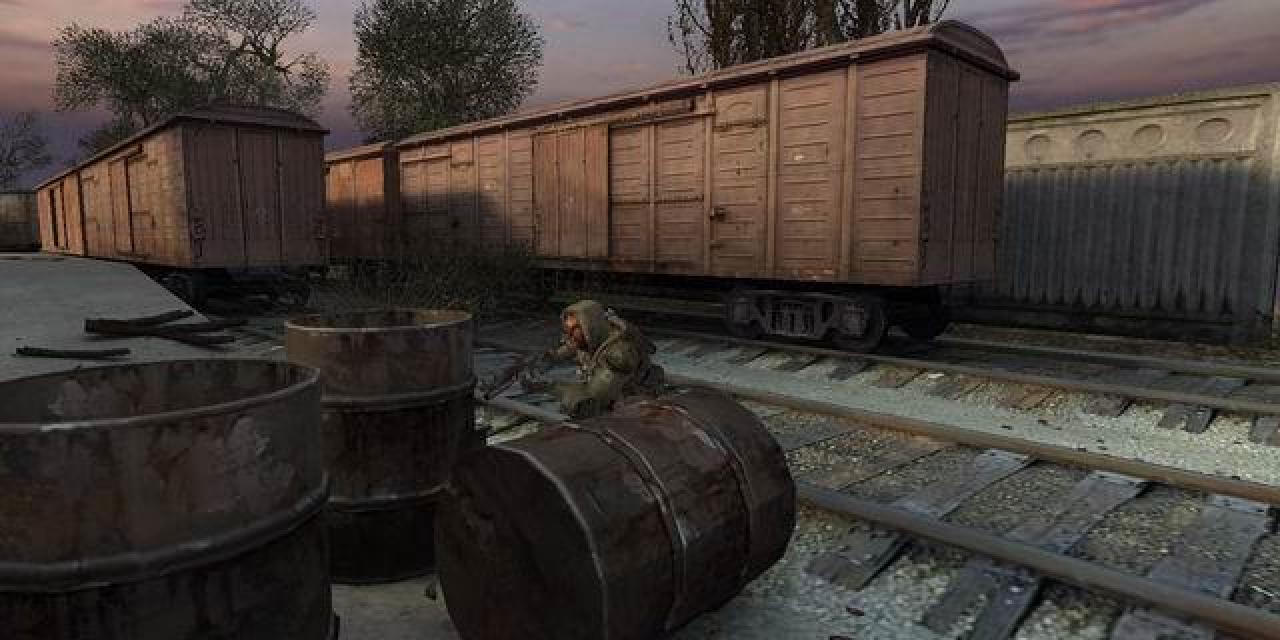
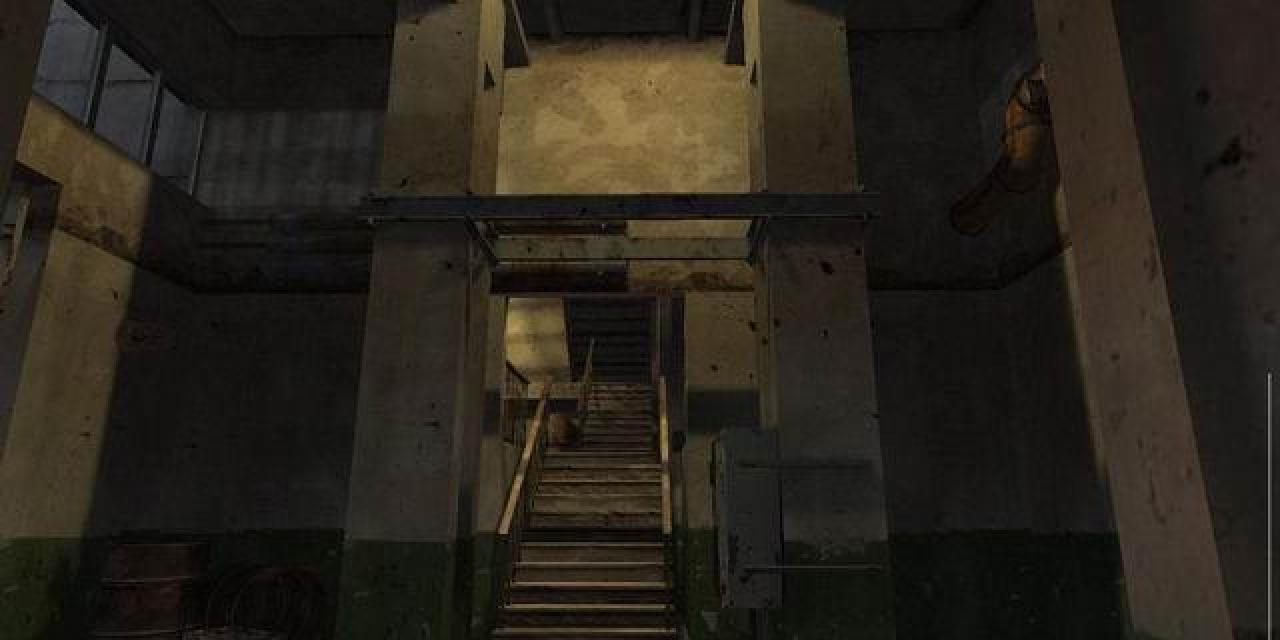
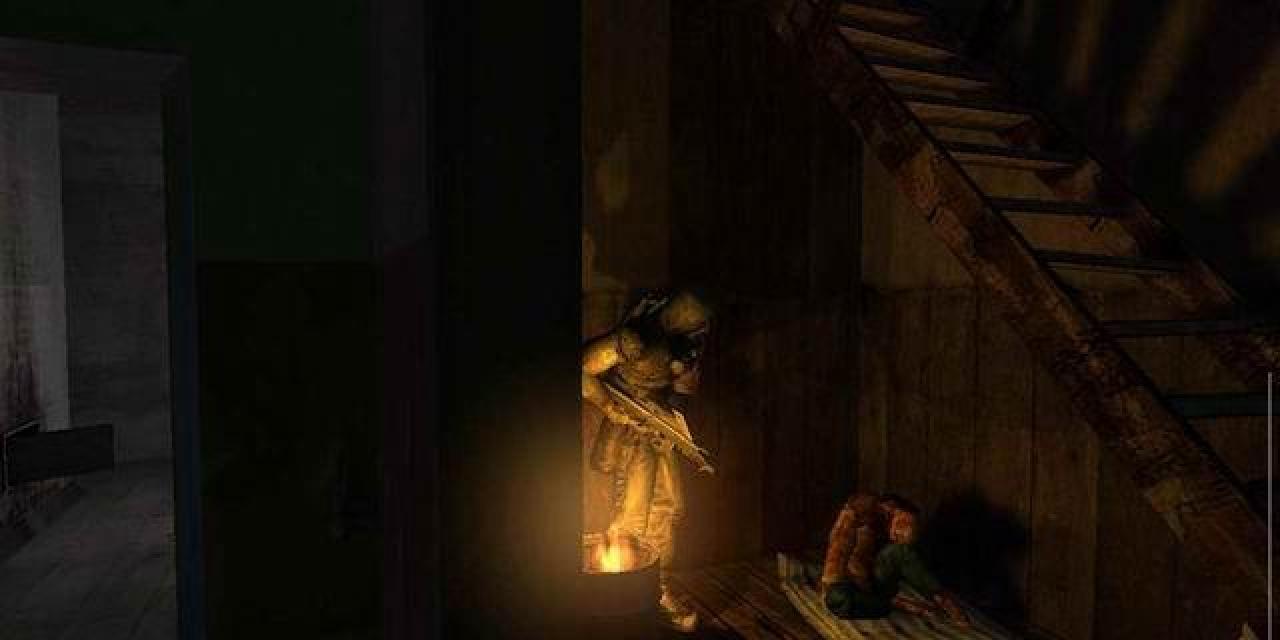
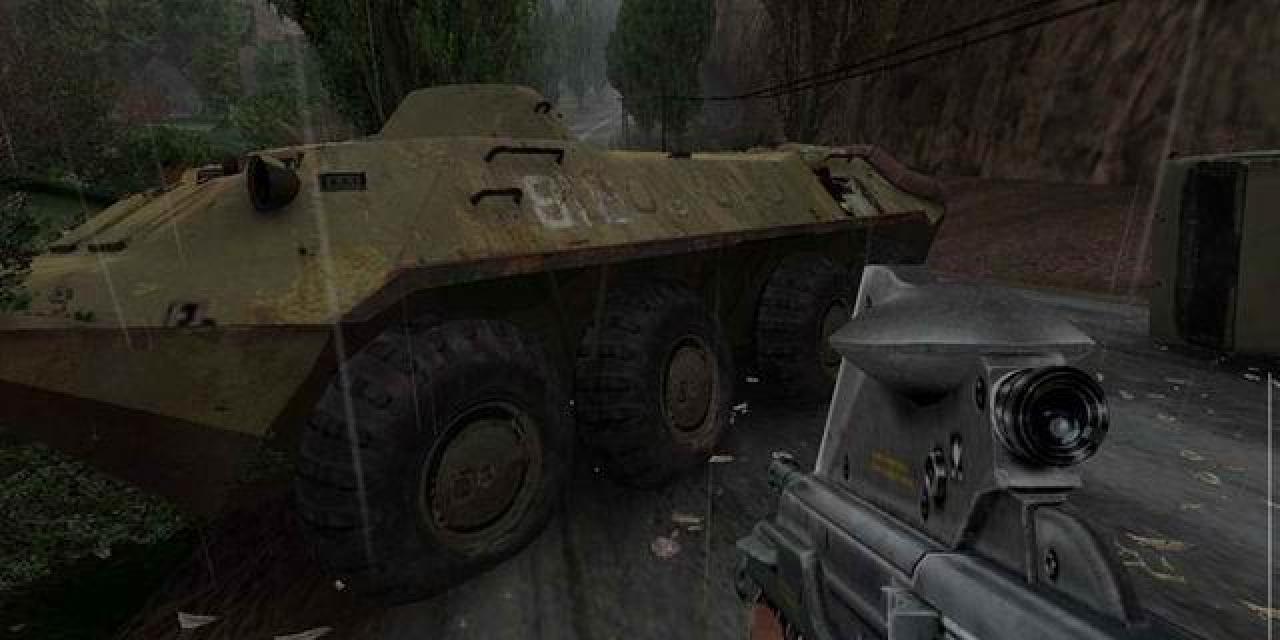
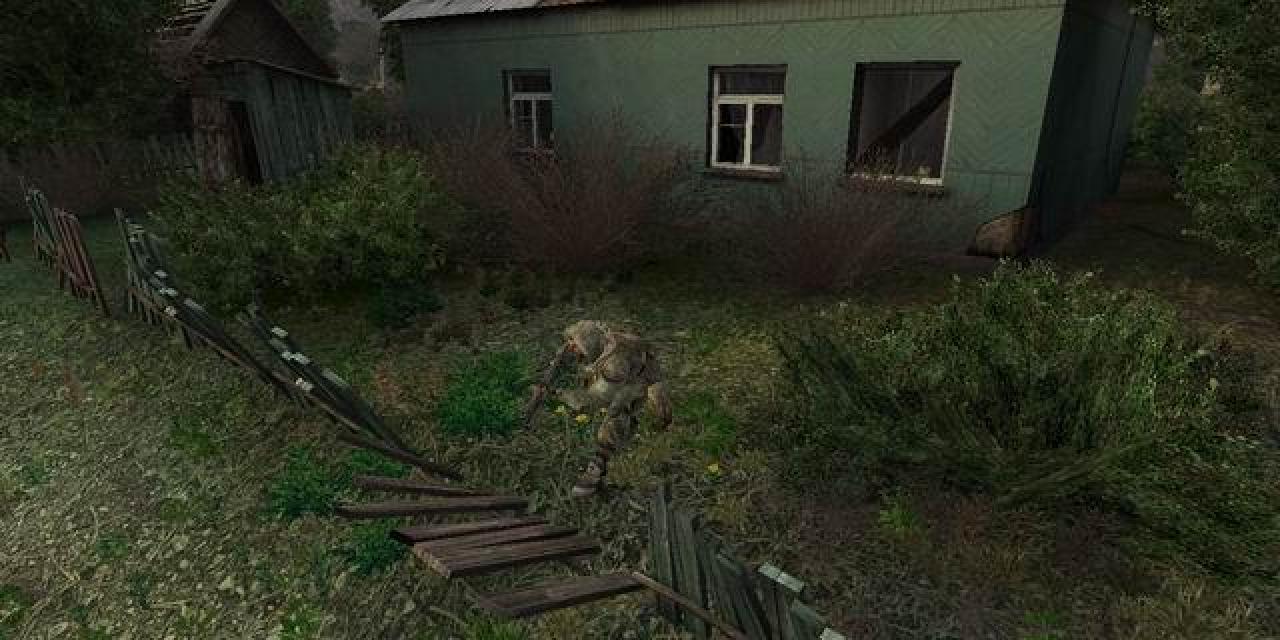
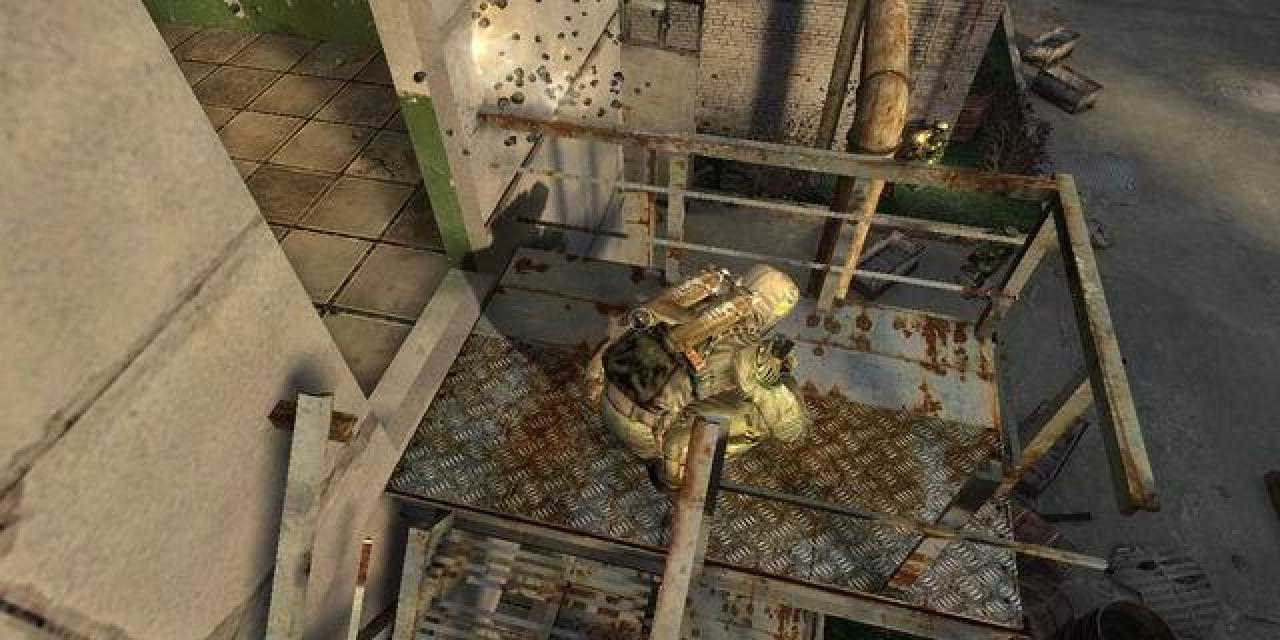
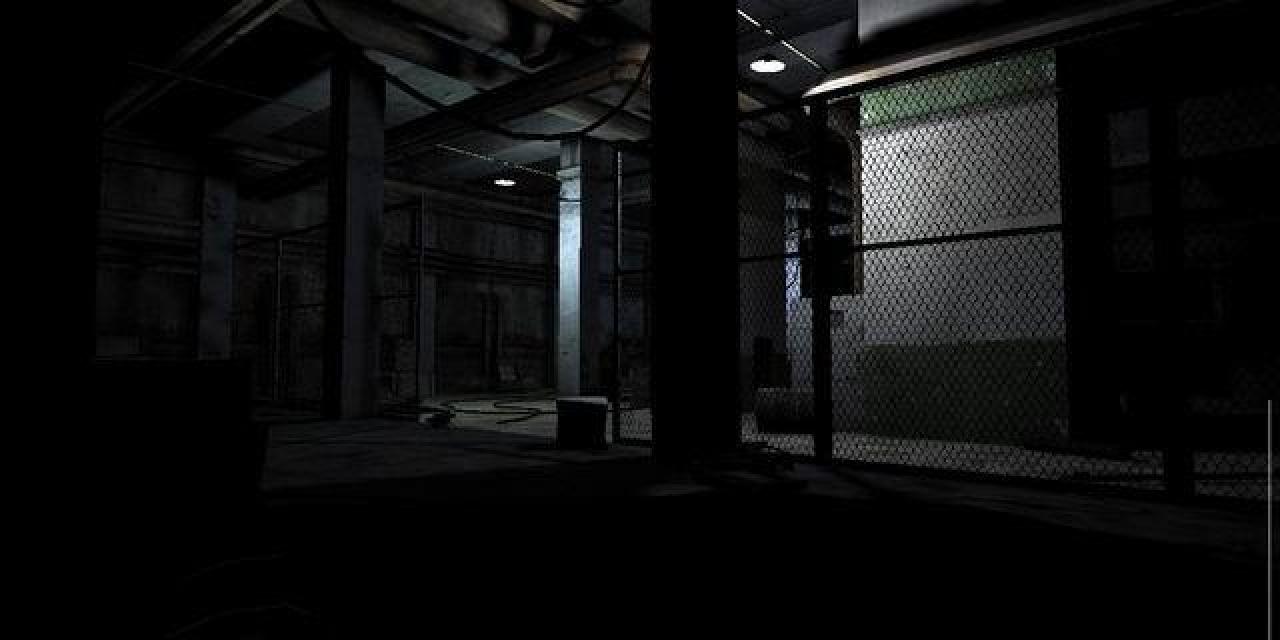
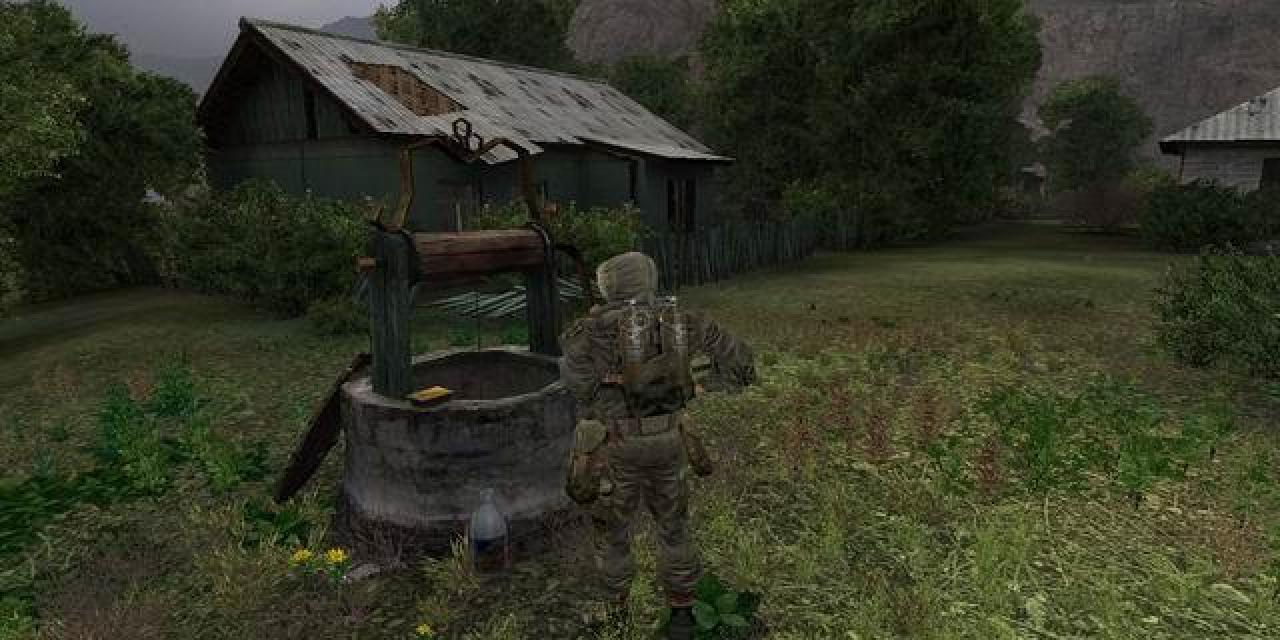
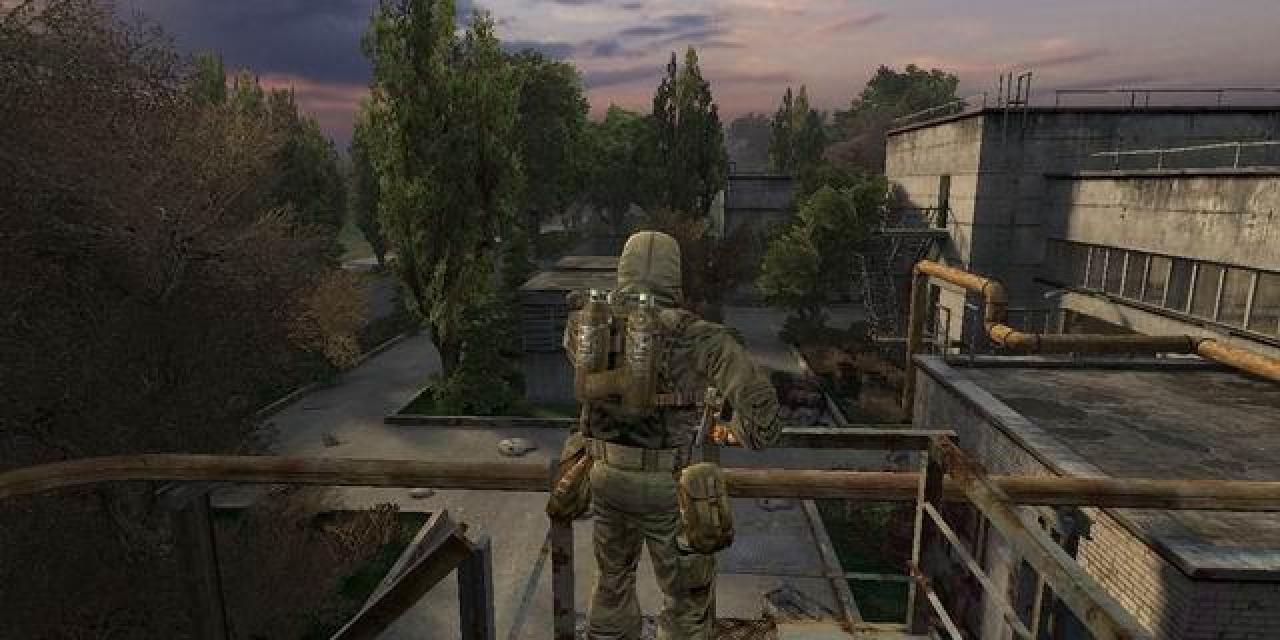
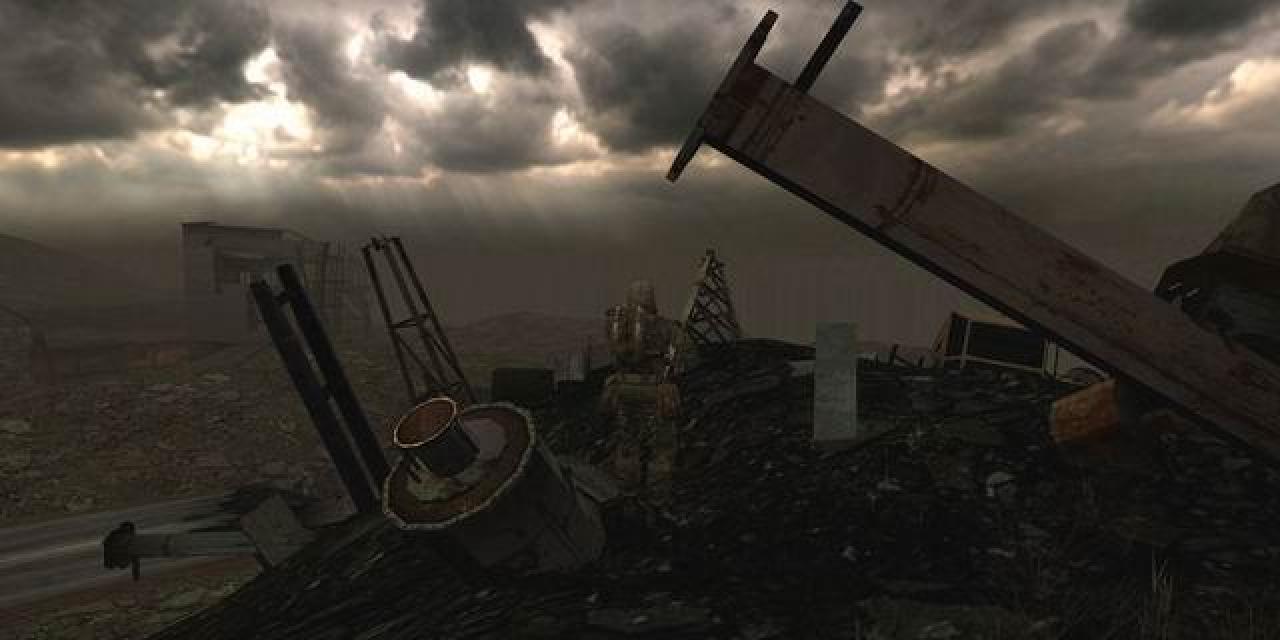
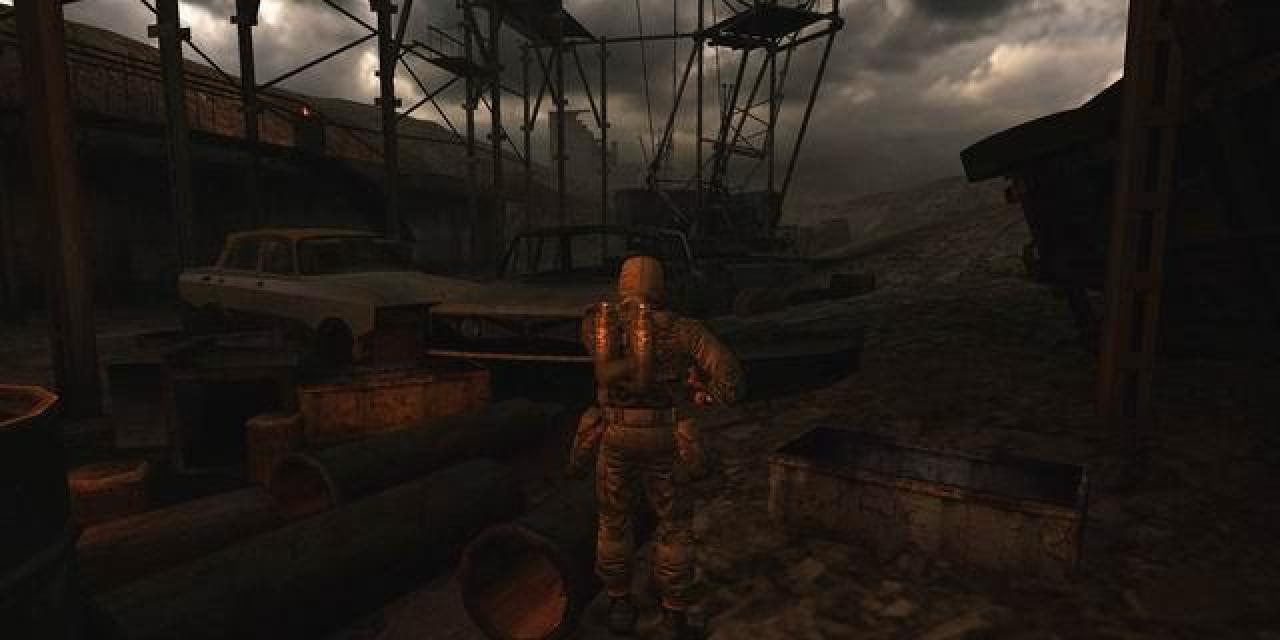
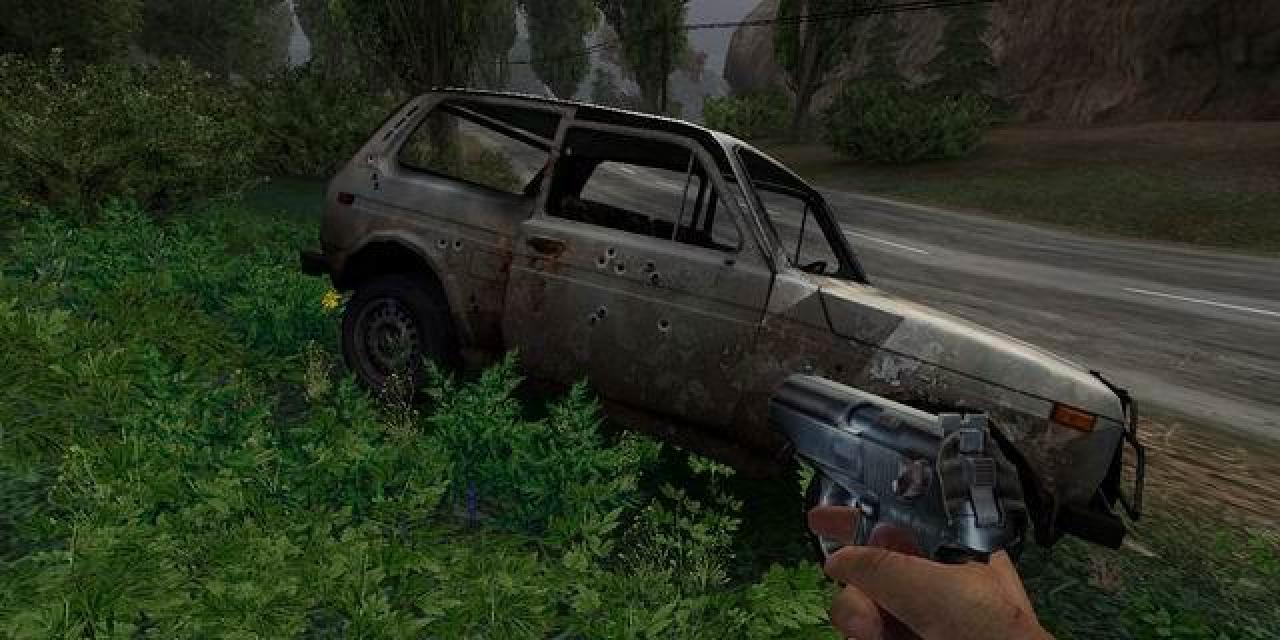
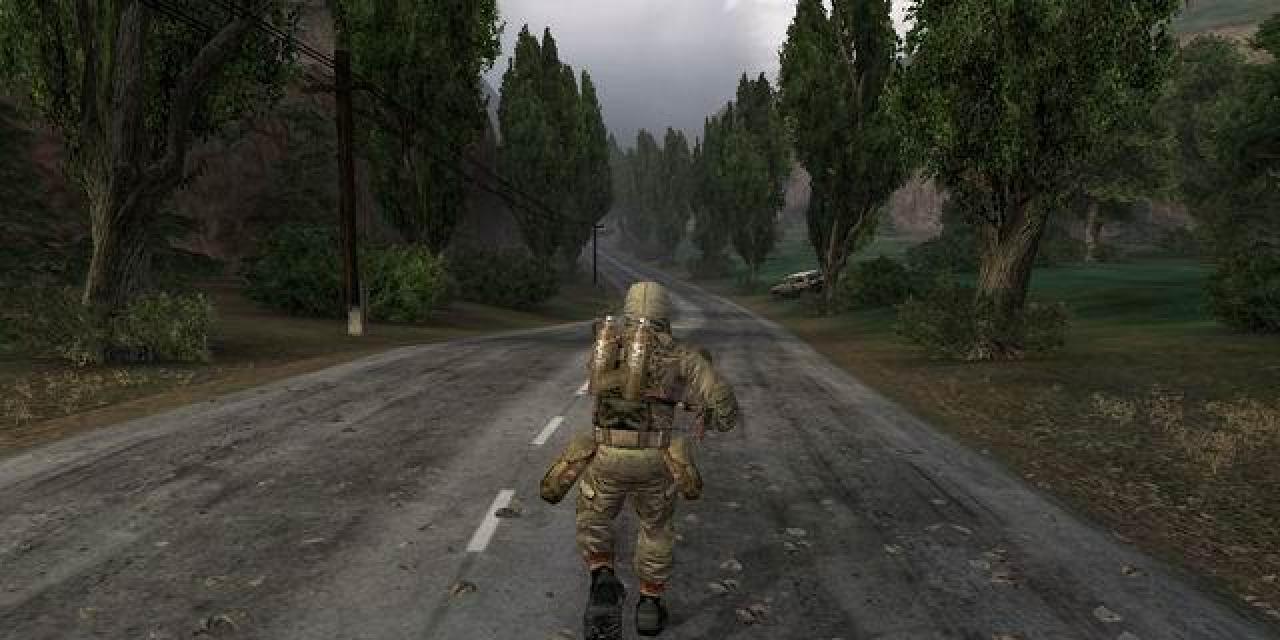
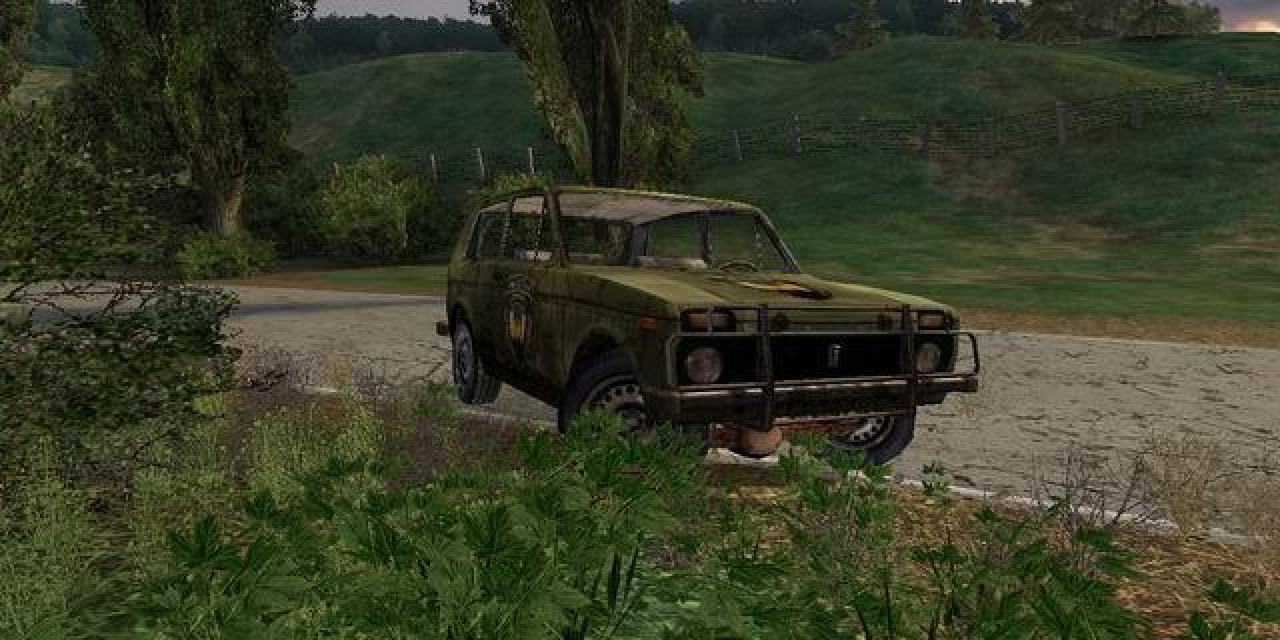
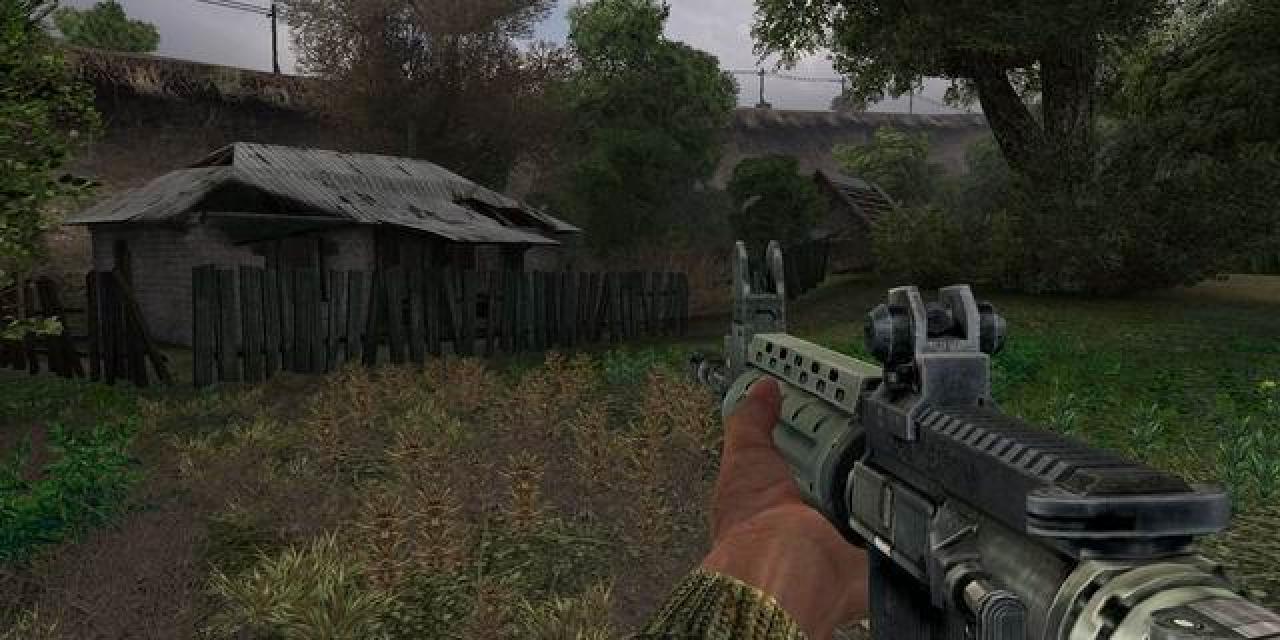
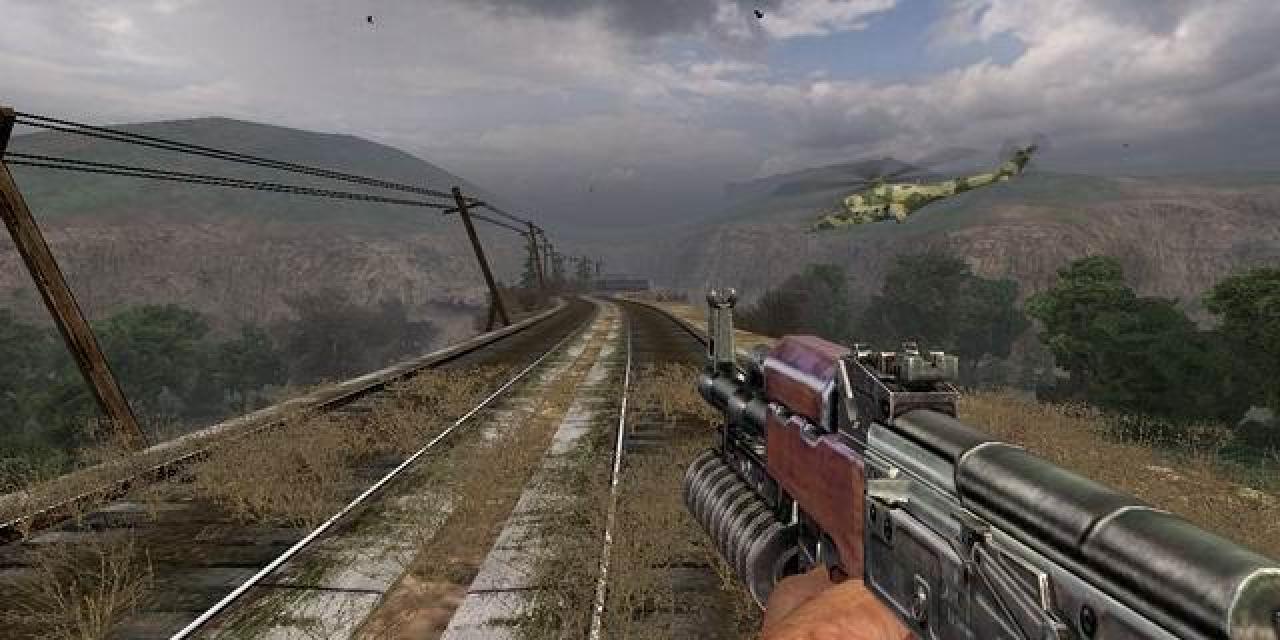
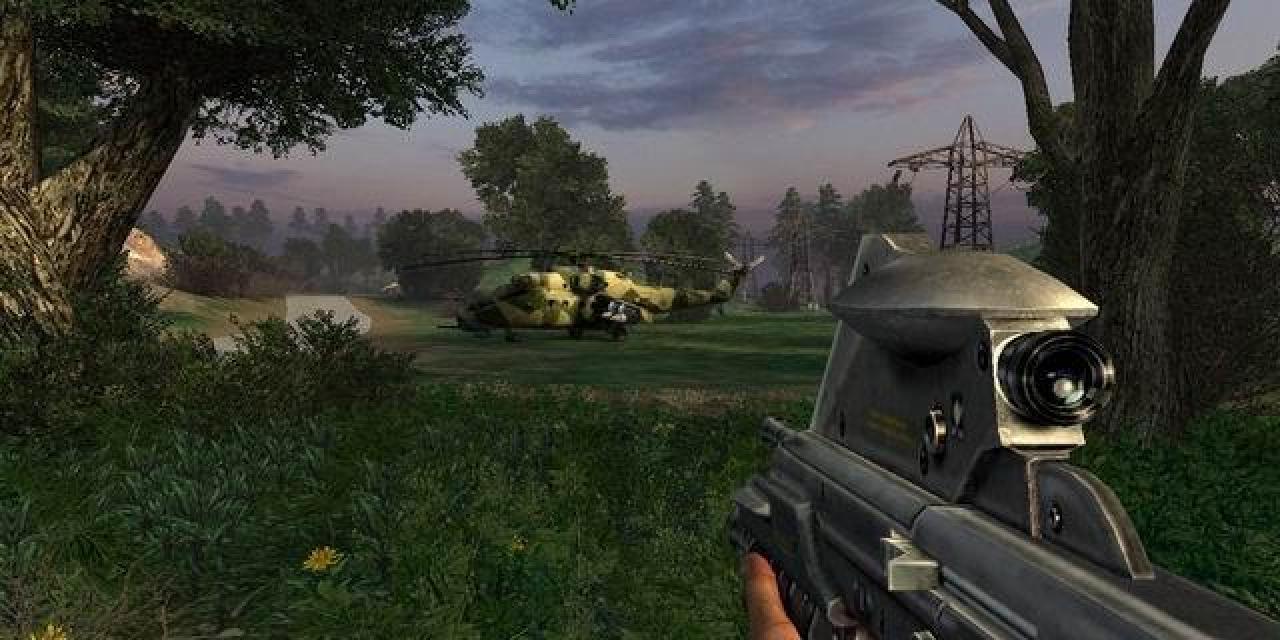
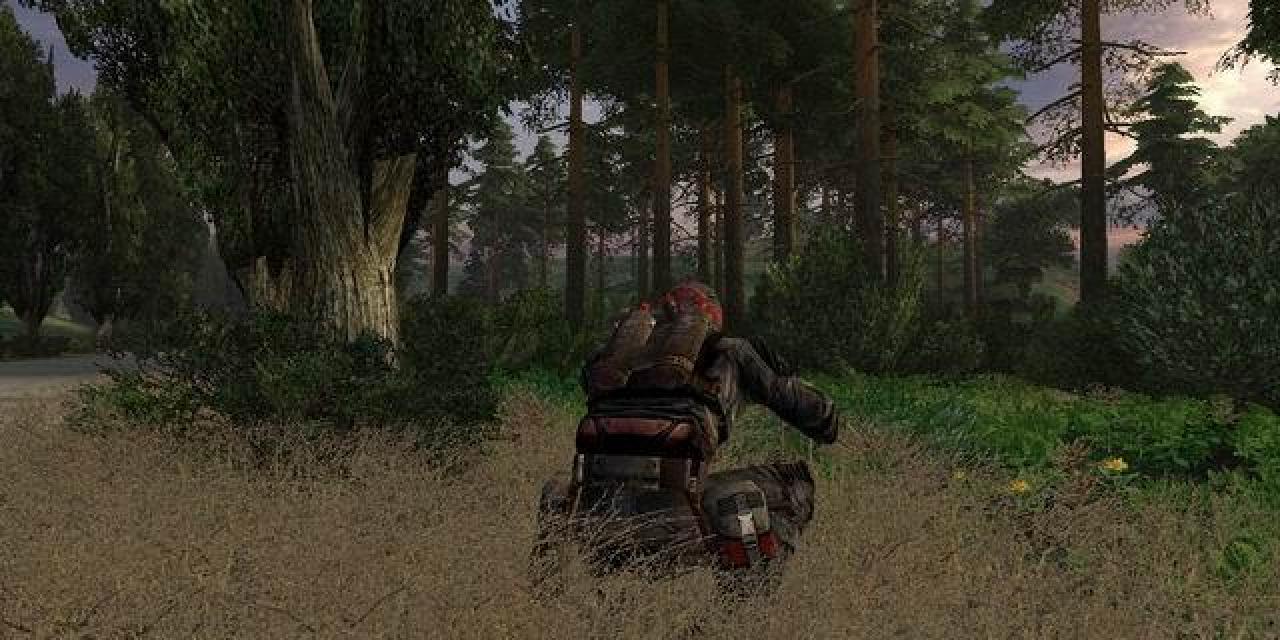
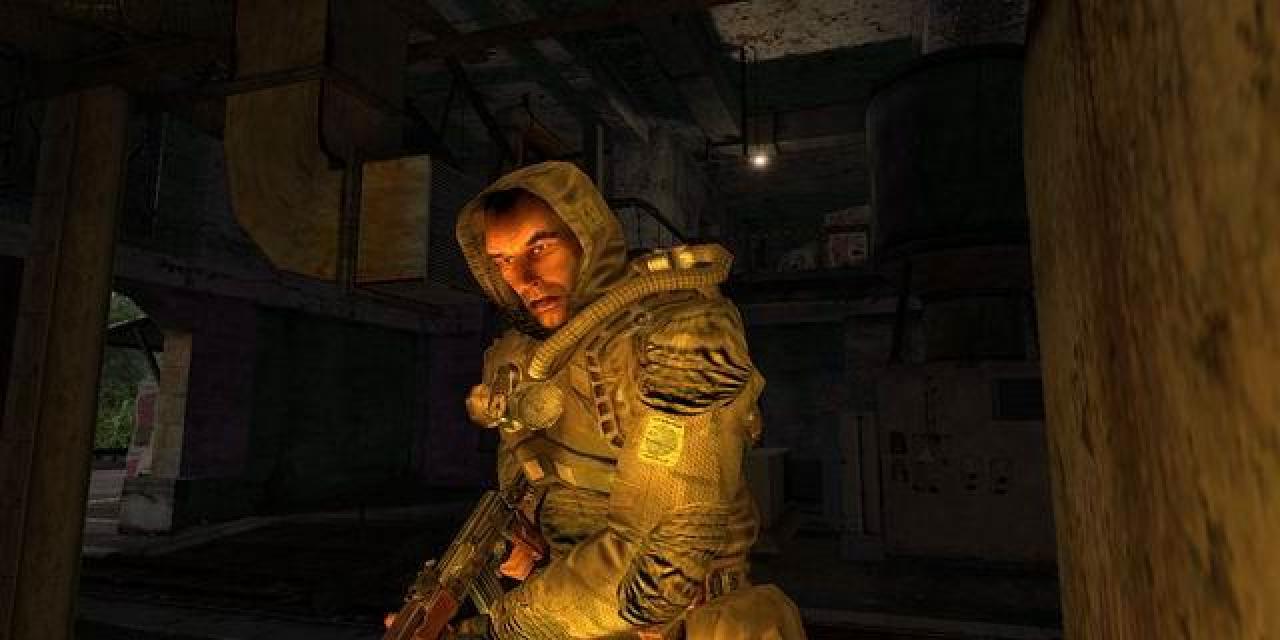

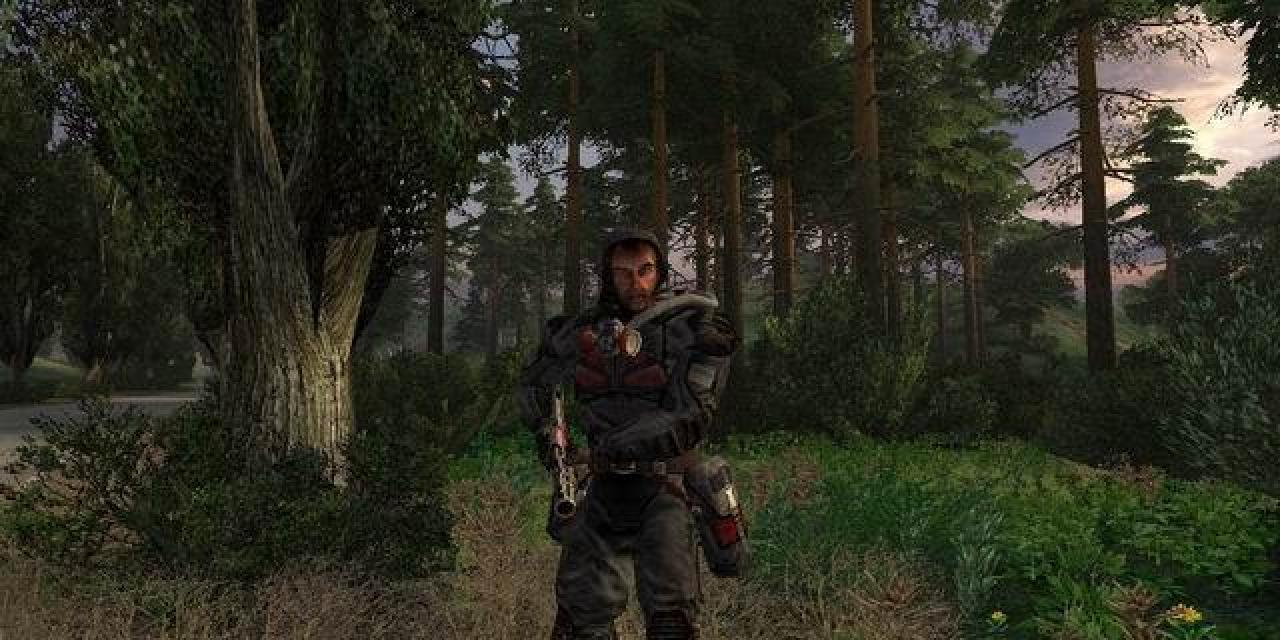
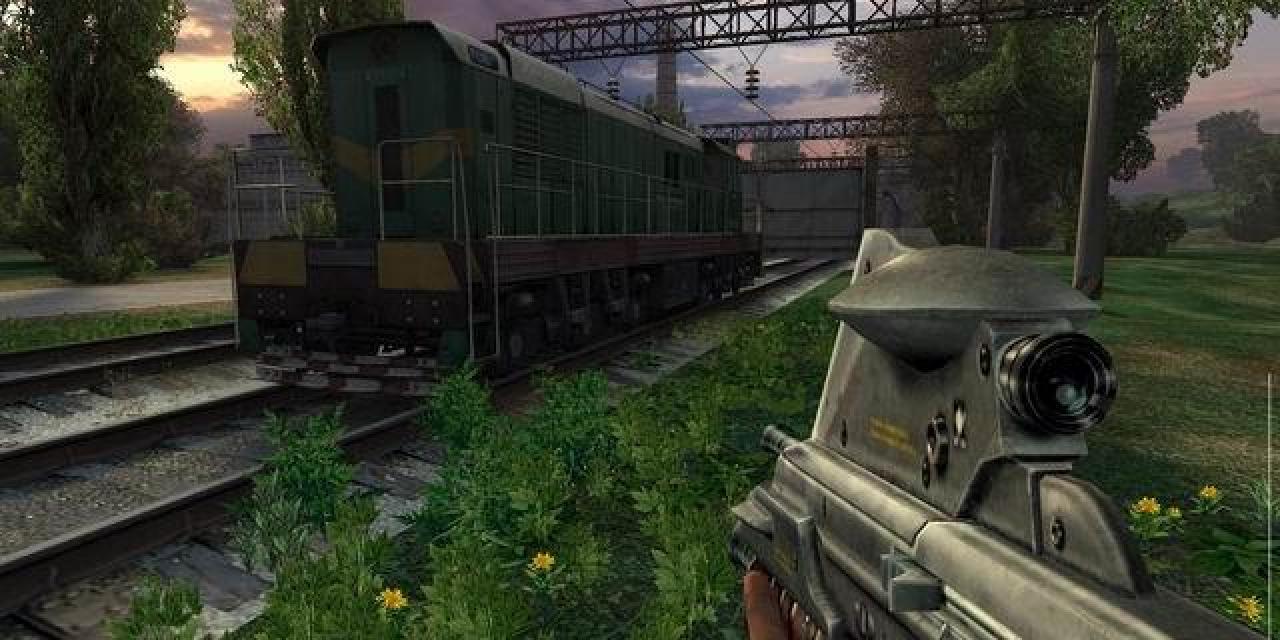
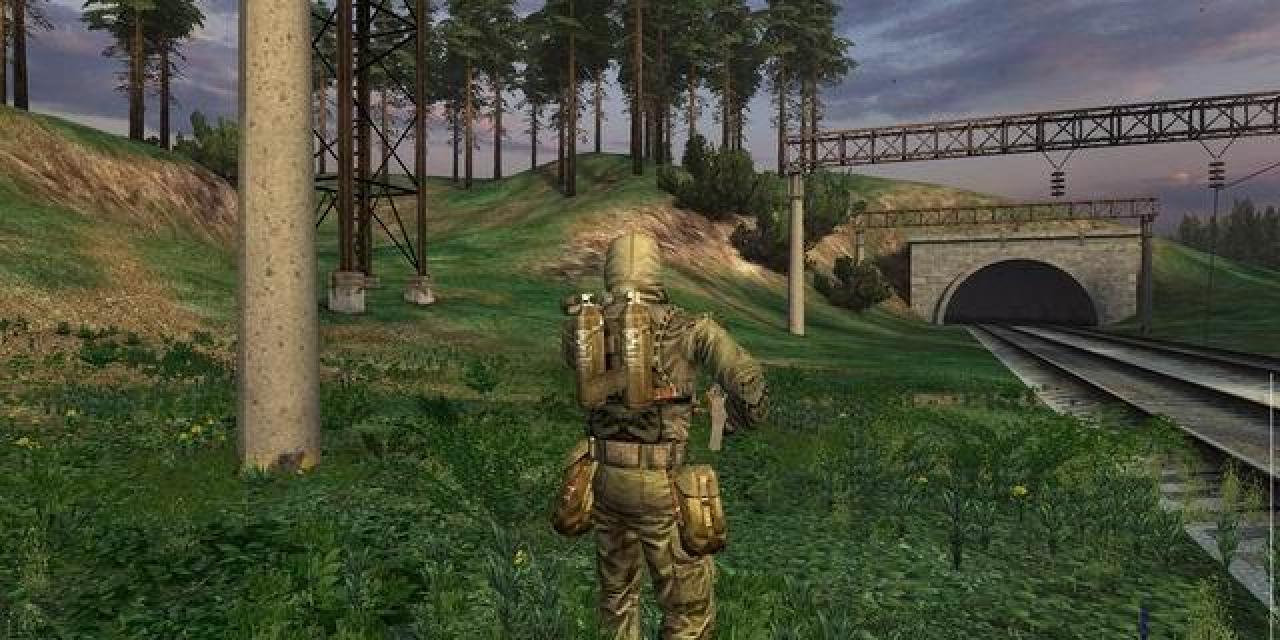
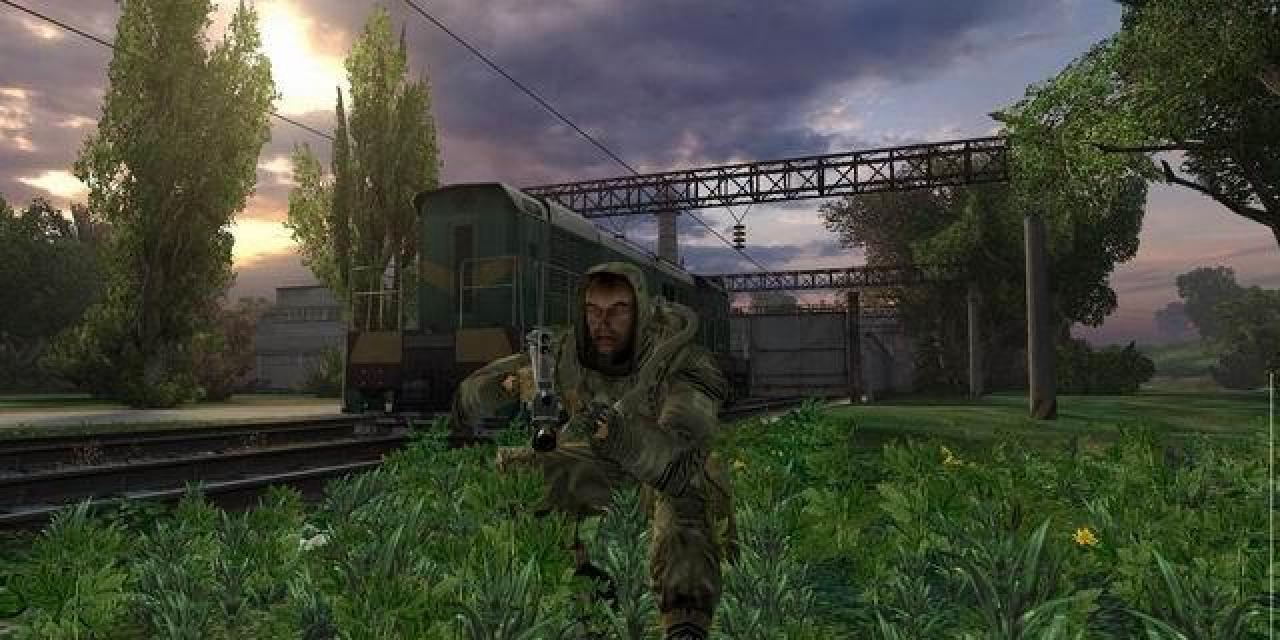
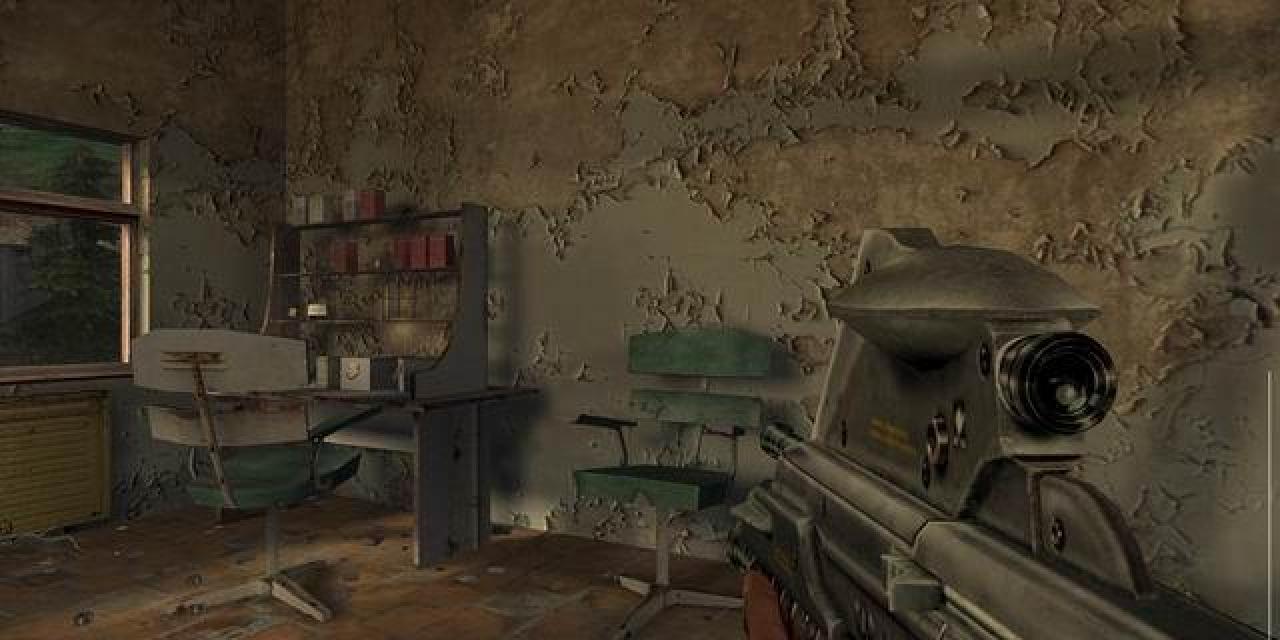
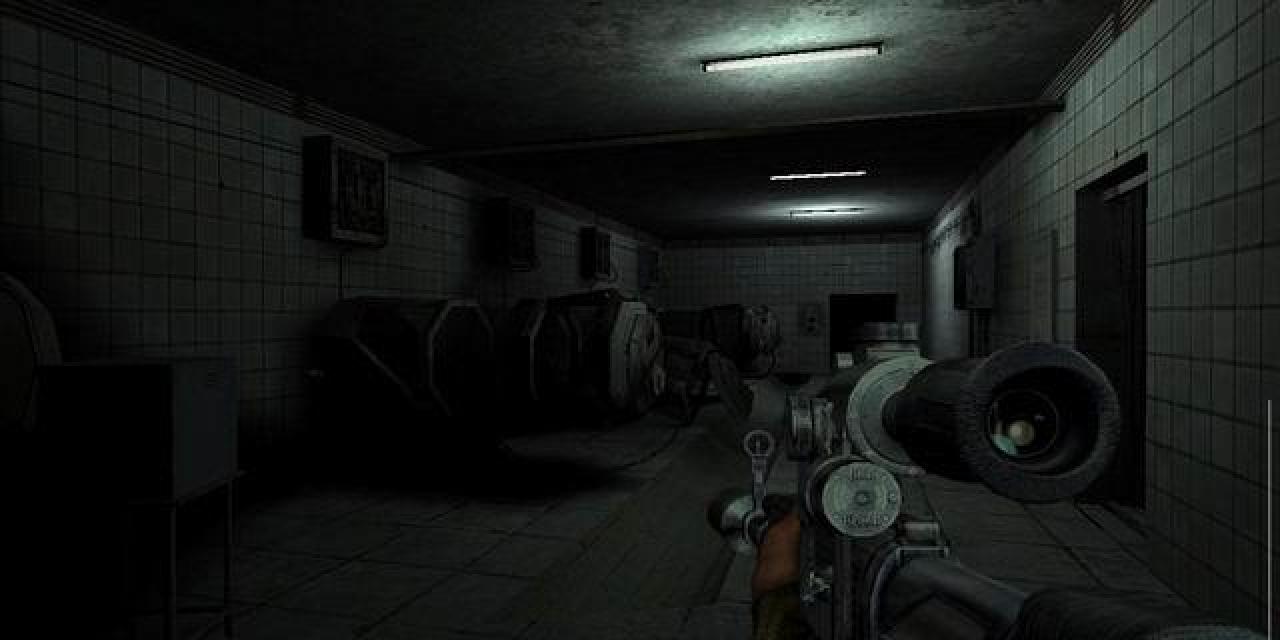
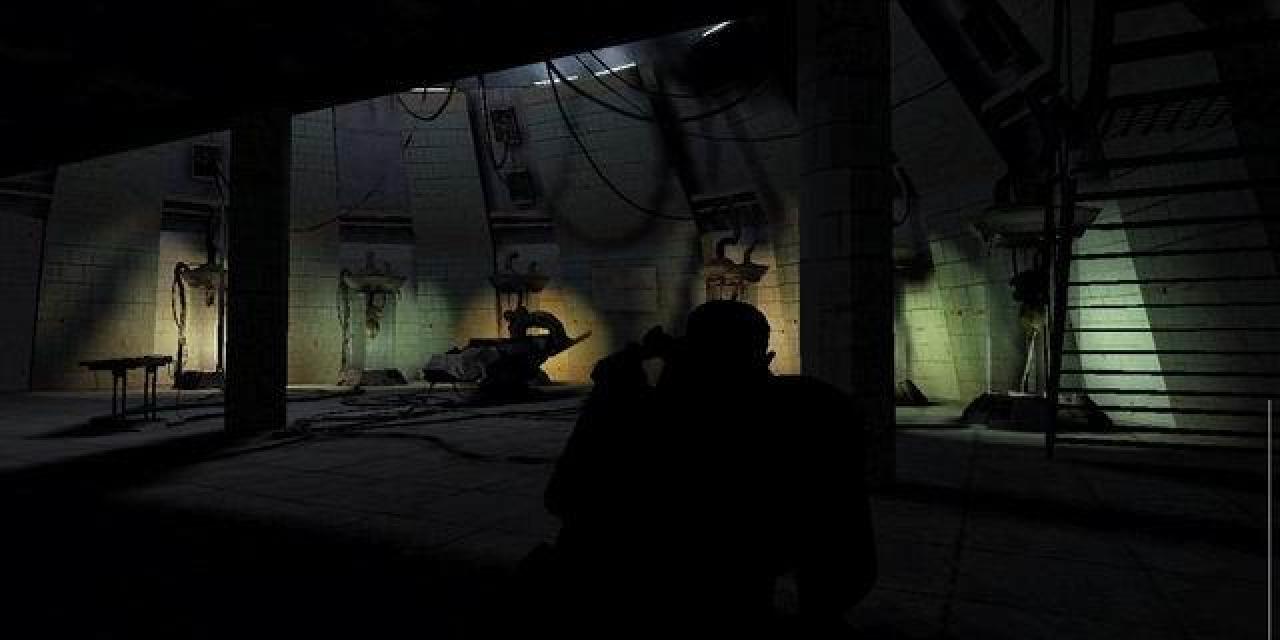
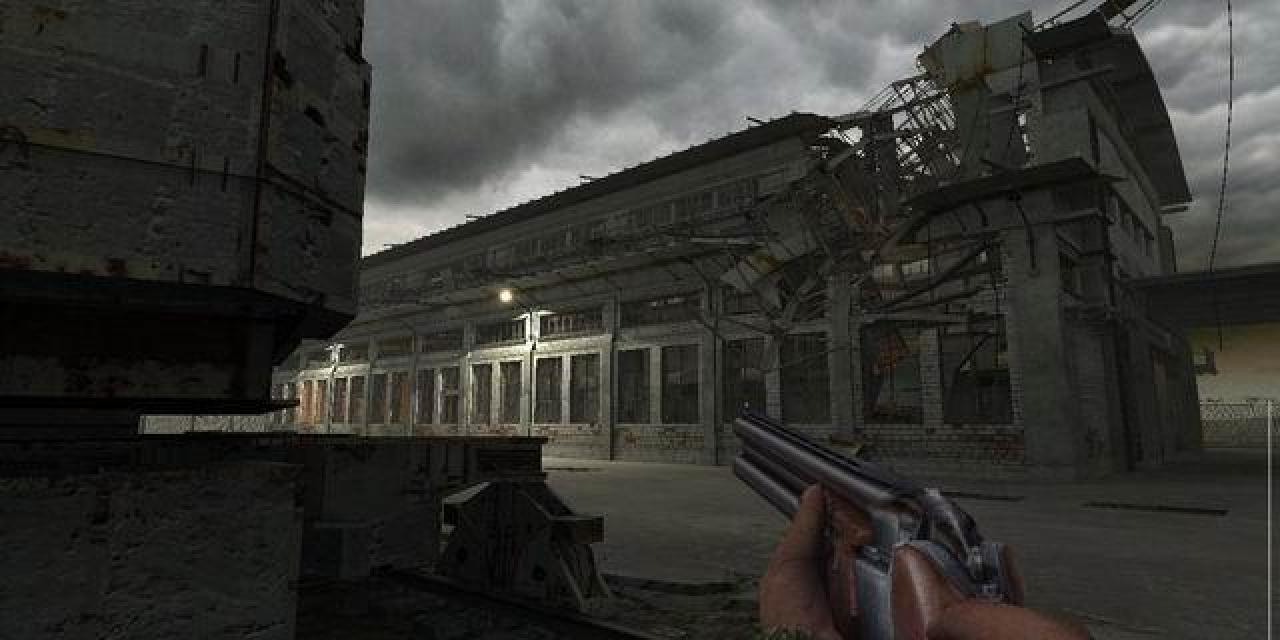
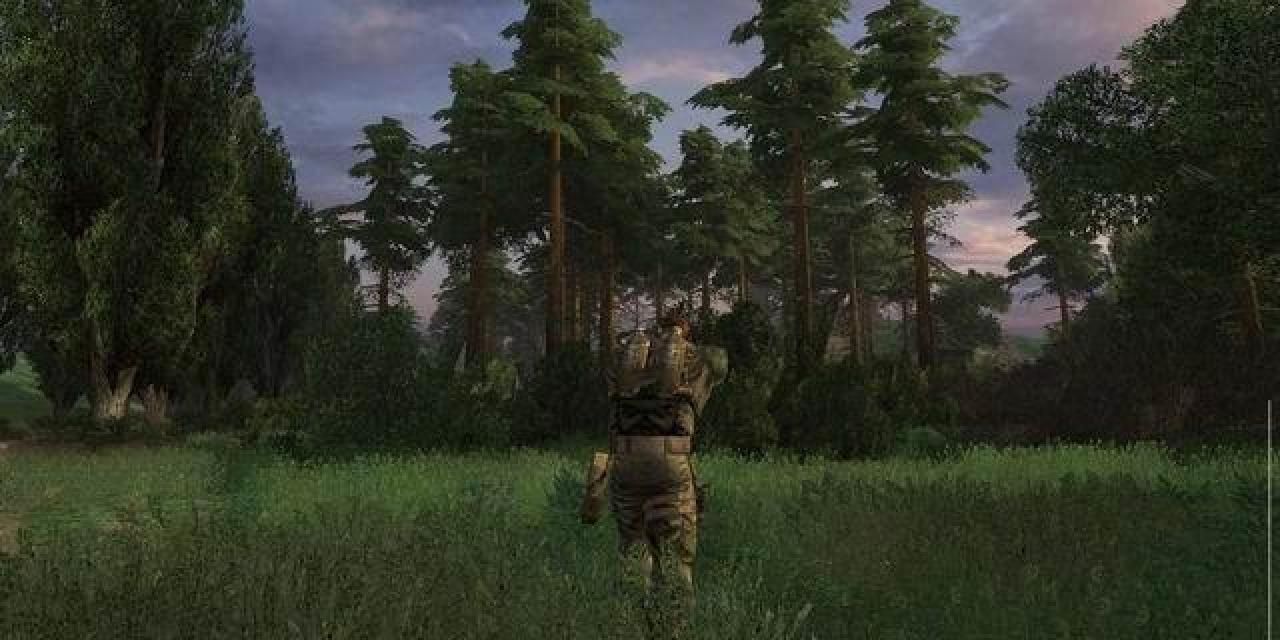
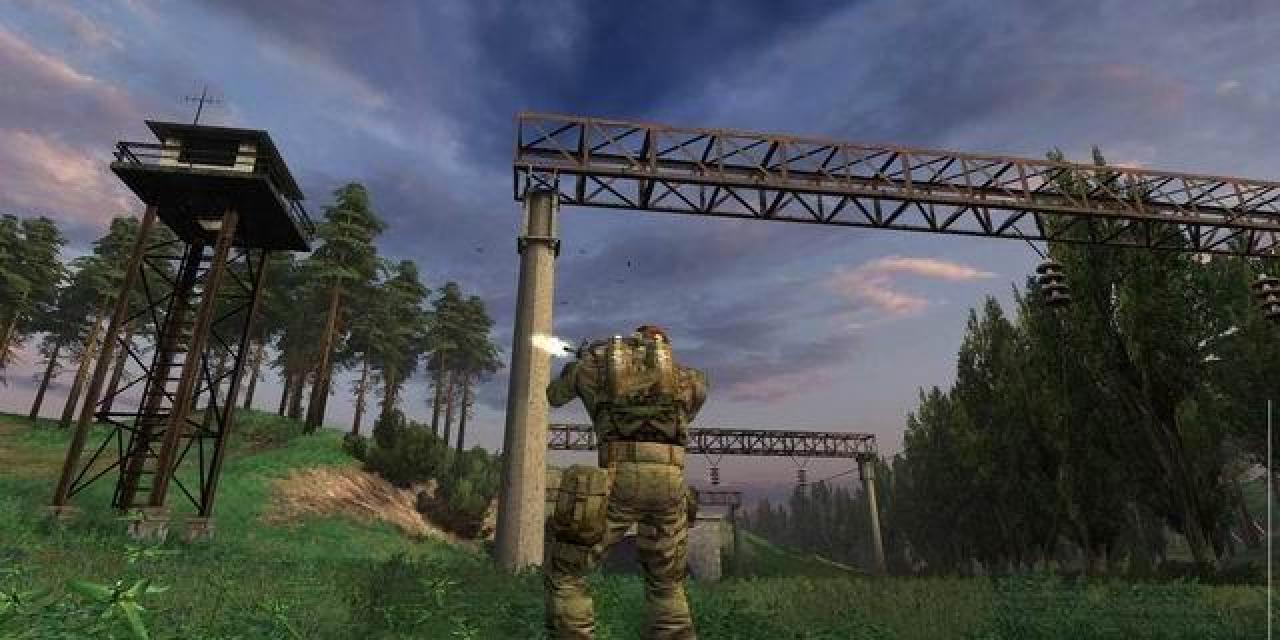
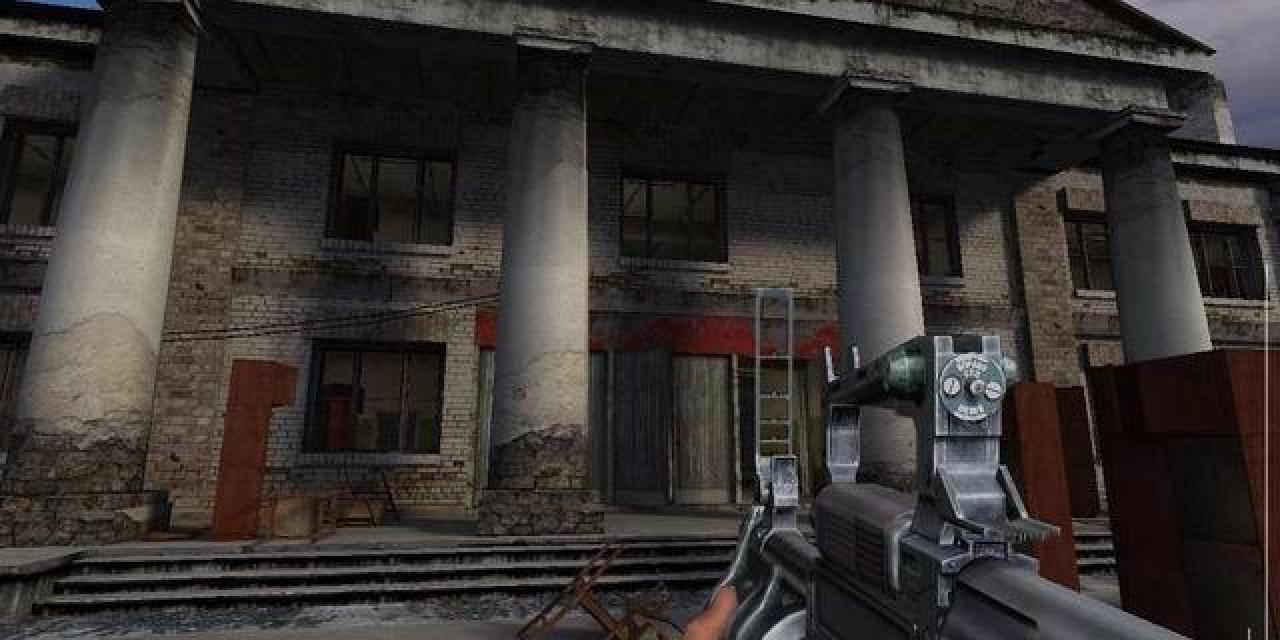
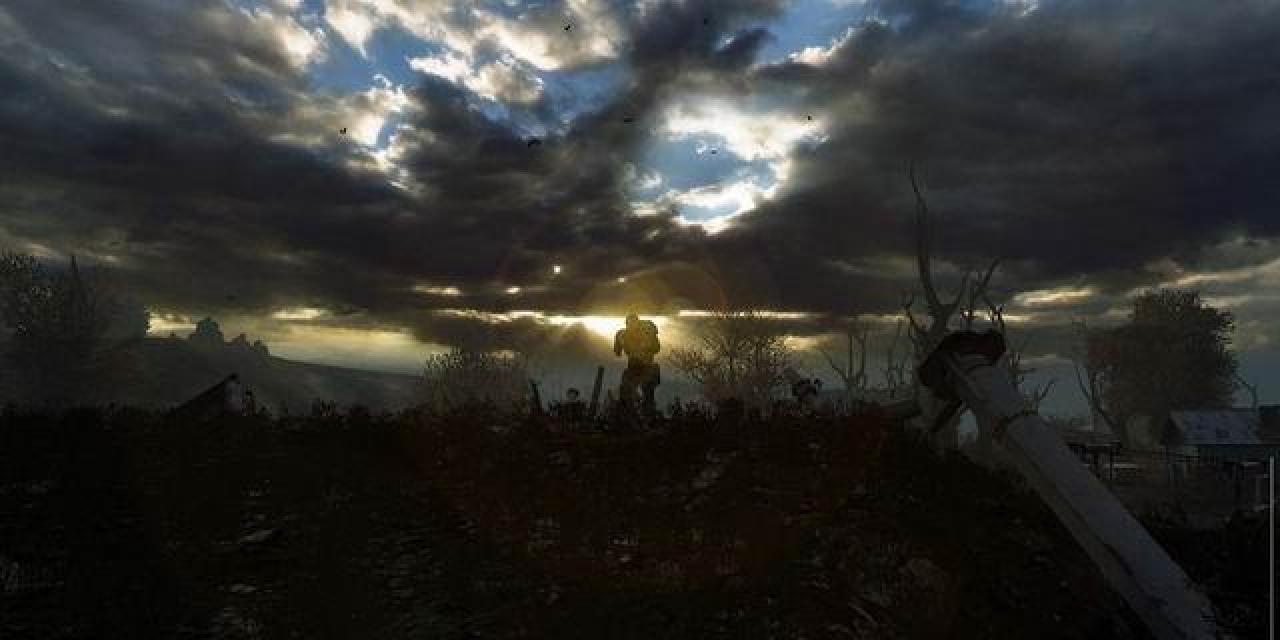
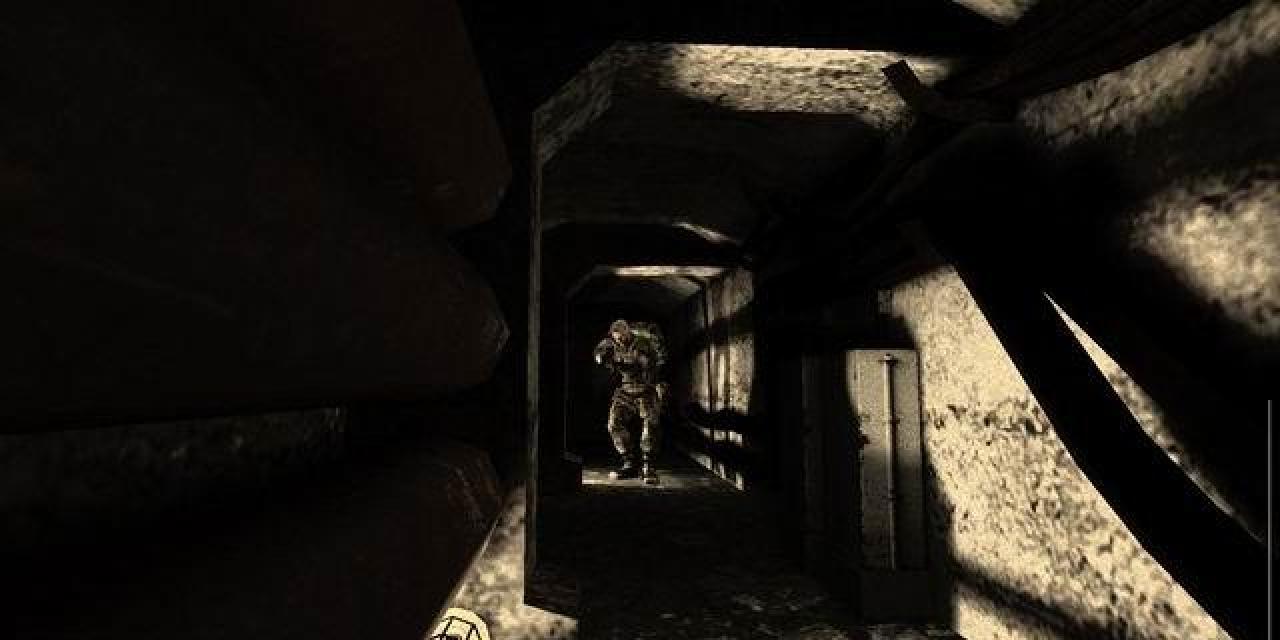
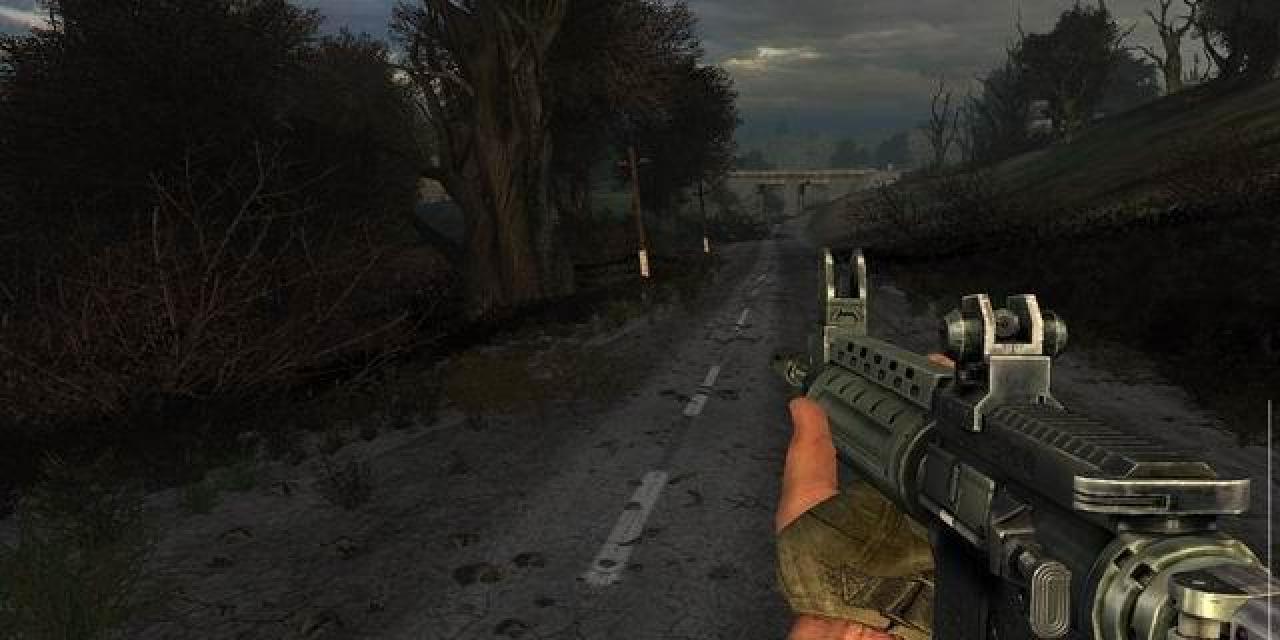

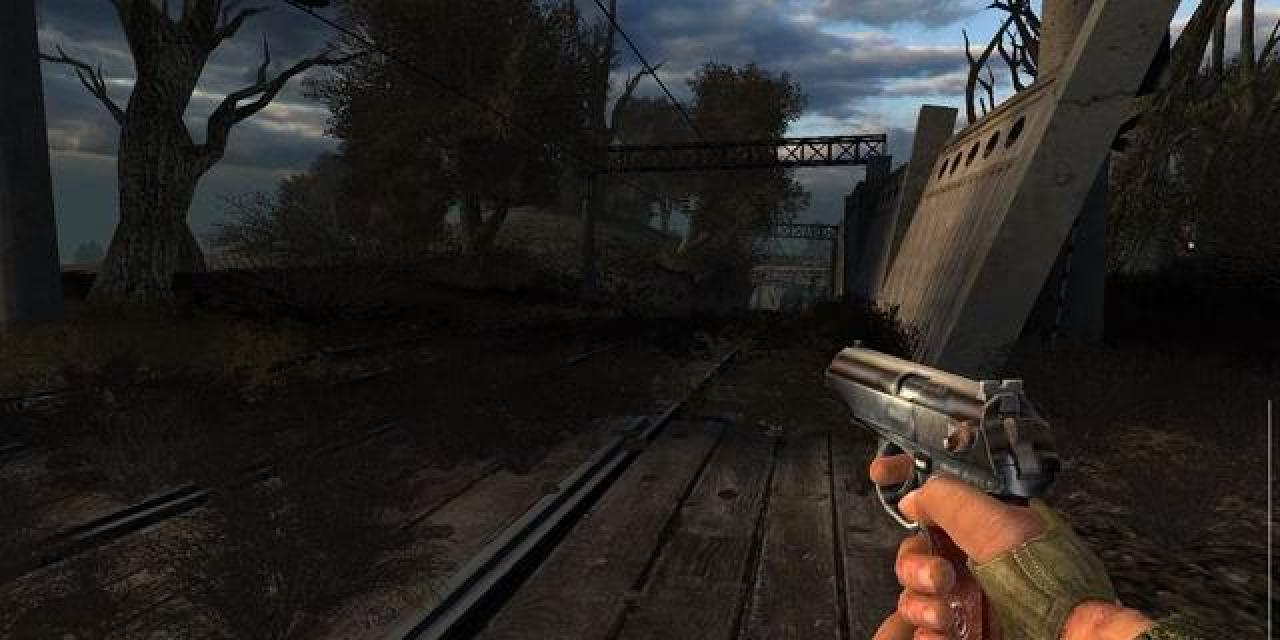
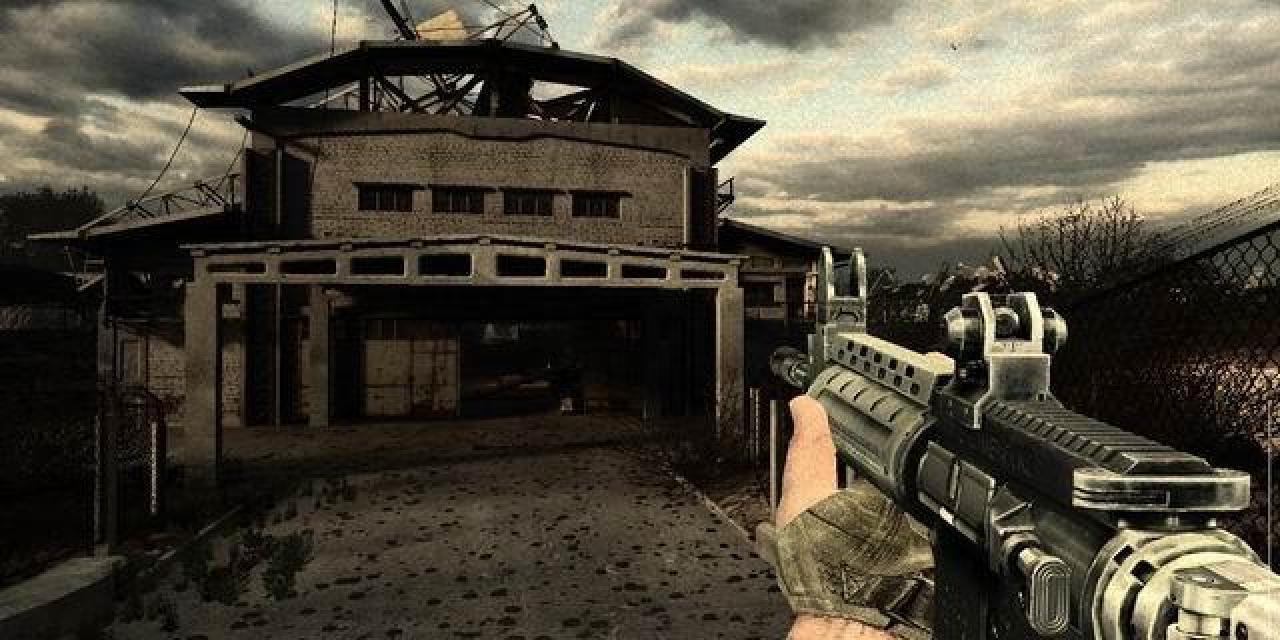
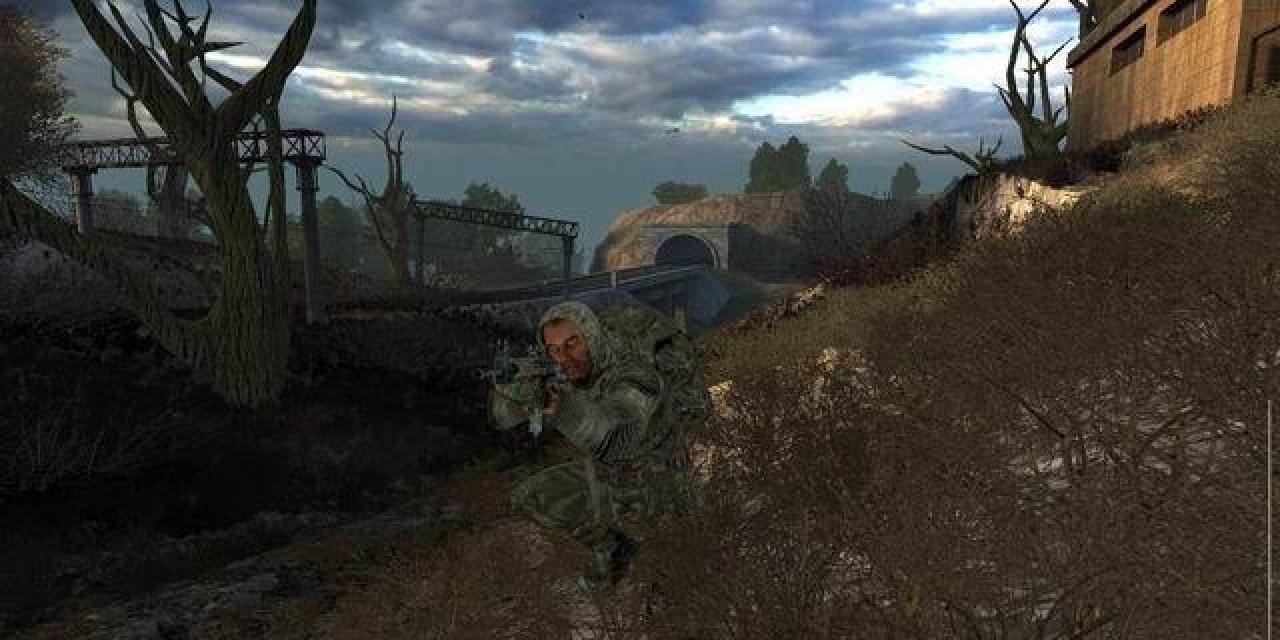
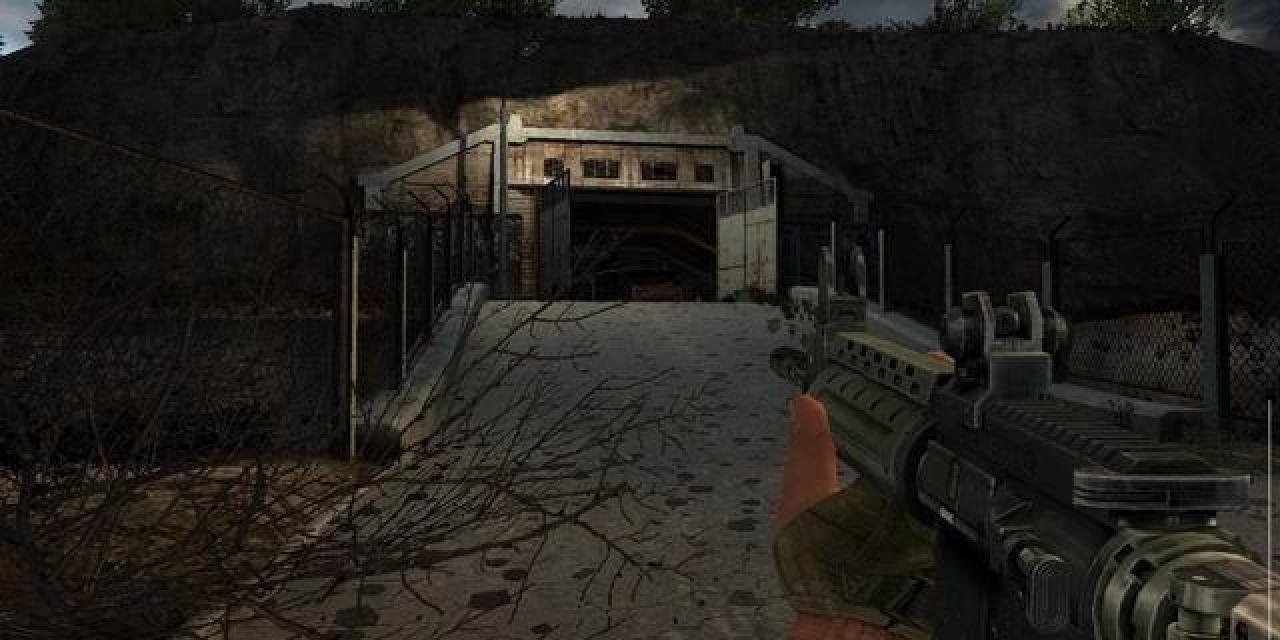
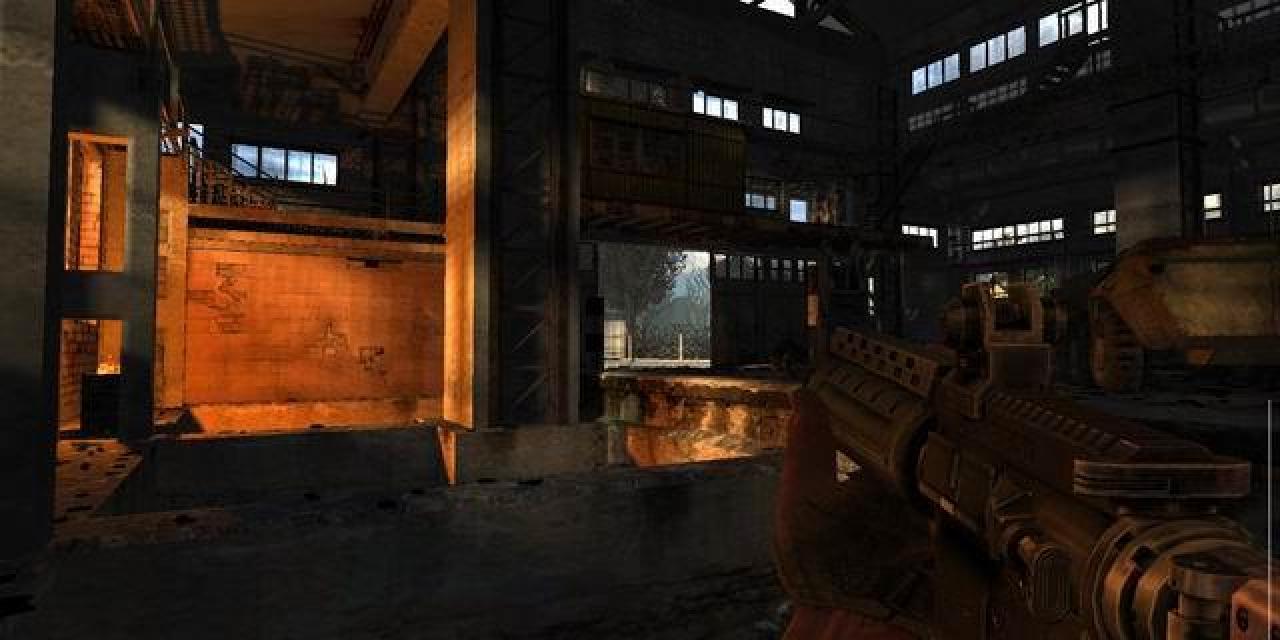
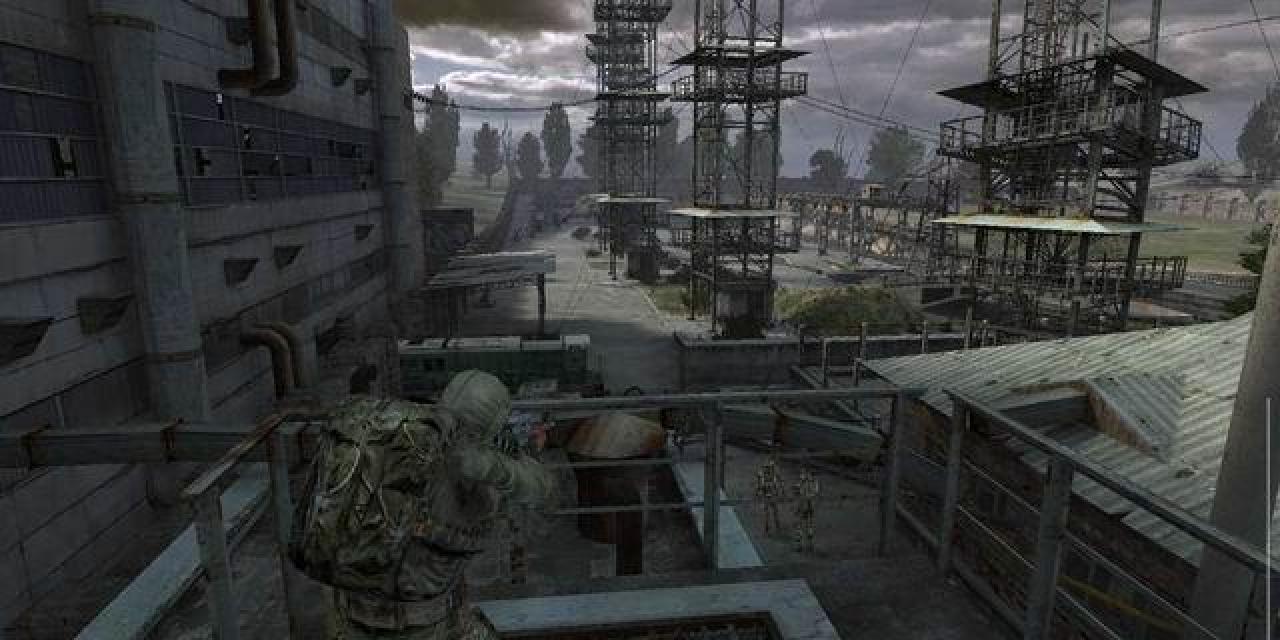
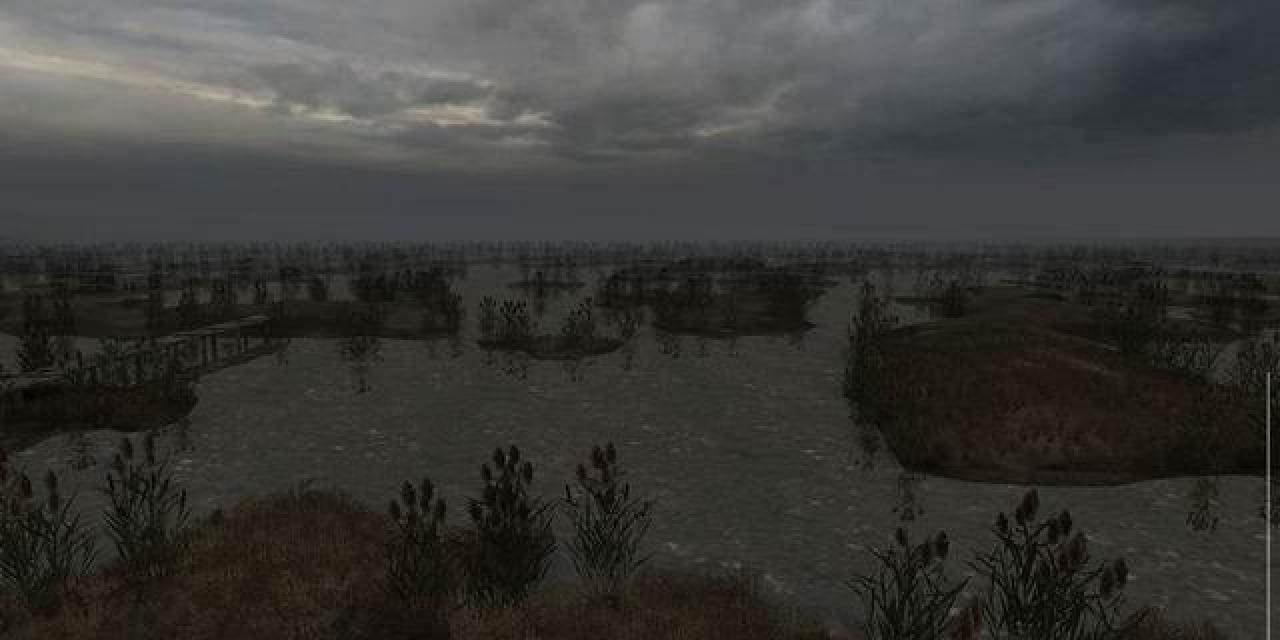
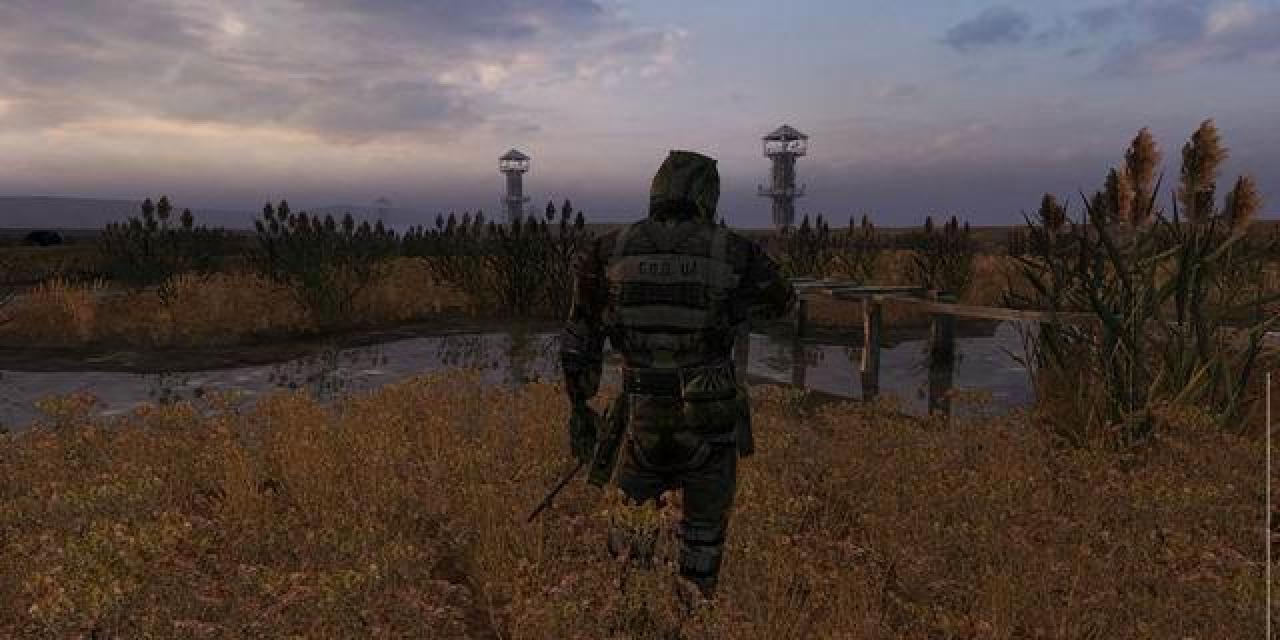
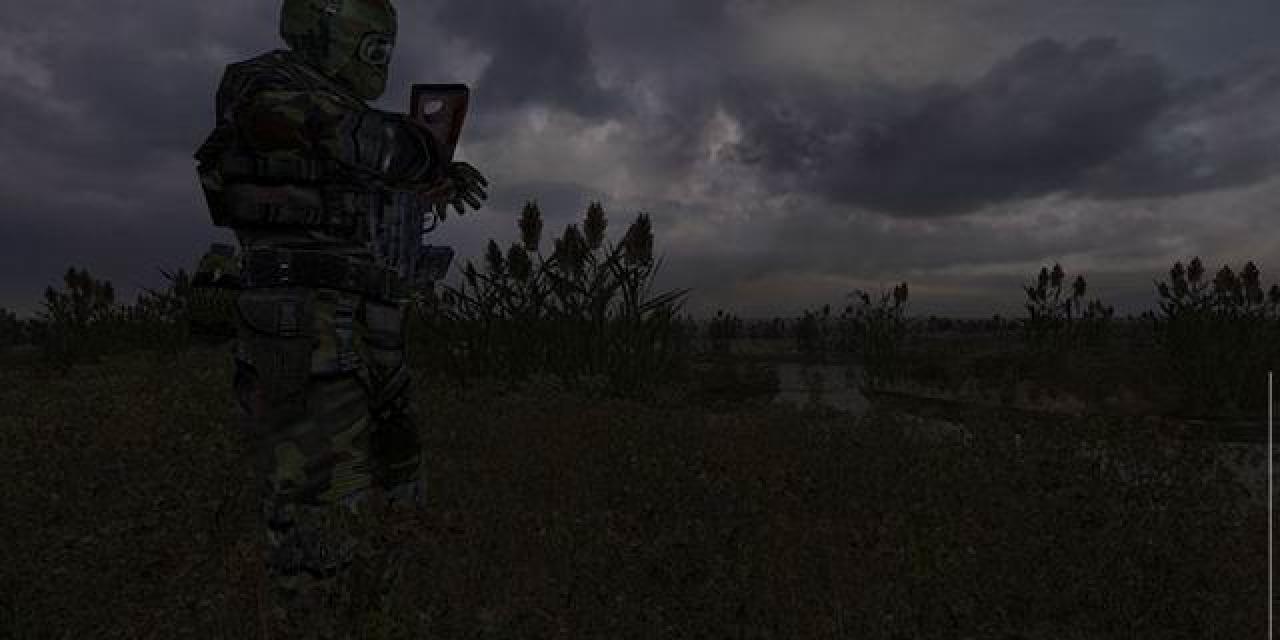

S.T.A.L.K.E.R. is a rare find in the world of games and even more so in the world of shooters. A game based on a book, "Roadside Picnic" by the Strugatsky brothers and Andrey Tarkovsky's subsequent movie based on that book, is not a commonplace occurrence. Follow that up with a story and settings taken from Chernobyl, the world's greatest nuclear disaster area and you have the ingredients and potential for a different experience. The game combines elements from all of those references in a scarily realistic way. The Russian science-fiction tale, Roadside Picnic, by Arkady and Boris Strugatsky. was published in 1972 and featured a zone of land, called zona, cordoned off after an alien landing. Stalkers sneak inside to recover objects with mysterious and deadly powers. The story, which the authors later adapted for the screen in Tarkovsky's 1979 film, Stalker, predicts the Chernobyl disaster just a few years later. Strangely enough, the contaminated area around the power station is now often called the zona.
But GSC Game World, the game's Ukrainian developers, did not stop there. Their plans for S.T.A.L.K.E.R. are as ambitious as their storyline, come spring of next year they plan to introduce the world's best non-linear FPS/RPG game.
Although in danger of being conceived as pretentious, the game has to be considered with the makers in mind. Based in Kiev, Ukraine, GSC Game World have offices only a couple of hours away from Chernobyl. The whole Chernobyl story is a real and distressing influence to everyone that grew up with the consequences, it is only natural then for that influence to surface in every aspect of peoples' lives and in the GSC case, that is games.
Set in 2012, the game imagines a second nuclear accident rendering the power station a hotbed of mutant activity. Players become Stalkers, moving freely through the 30 square kilometers as they dice with death to find alien artifacts, and attempt to solve the mystery of this creepy area.
The intrigue behind the game doesn't stop there however, Those two things [the story and film] served as a powerful inspiration for us, says Oleg Yavorsky, GSC's PR Manager. We borrowed the stalkers and the idea of the artifacts, however, he adds, the setting is different, and we have our own storyline. The game utilizes a popular rumor that the Chernobyl accident was a result of an antenna that directed psychotropic waves at the U.S., and that was accidentally turned on by the power station's staff. According to some experts, there was such an antenna, we have a photo of such a structure.
Just in case you've never heard of GSC before, they are responsible for Cossacks: European wars and its two follow-up addons Cossacks: The Art of
War and Cossacks: Back to War. If that series doesn't ring a bell, try the recently released real-time strategy title American Conquest, or tactical shooter Venom: Codename Outbreak and arcade racing game, HoverAce. GSC have certainly kept themselves busy in the past few years.
The whole S.T.A.L.K.E.R. premise is truly intriguing and so is the concept behind the game's gameplay and technology. Follow the link below and to the right for a more detailed look at S.T.A.L.K.E.R.
As with most noteworthy game, S.T.A.L.K.E.R. is built around a promising, in-house, engine. The game will be powered by the exclusive in-house X-ray engine.
S.T.A.L.K.E.R. will be an nVidia recommended game, contrary to common trends, something which we witnessed at this year's ECTS where the gameplay video was demonstrated in nVidia's booth. According to Mr. Yavorsky The X-Ray engine was initially planned as a unique tool that would allow us to actualize even the craziest ideas of a game as close to reality as S.T.A.L.K.E.R. The realism is key word for S.T.A.L.K.E.R. and it applies to virtually everything the game will feature, graphics is in that row too. Nvidia is our technical partner for S.T.A.L.K.E.R. and the engine will offer support of quite a few FX features. Geforce FX offers excellent shader possibilities, and we are going to make an extensive use of that. We also design dedicated renderer for DX9 class hardware with fully real-time dynamic lighting, soft, physically correct shadows cast from everything onto everything, true per-pixel lighting, 1-3 millions of polygons per frame, etc. Owners of other brands of high-end graphic hardware will not be deprived of enjoying S.T.A.L.K.E.R. with some of the state-of-the-art effects their cards can offer.
The Engine
X-Ray is a versatile engine incorporating most state-of-the-art technologies. It supports both indoor and vast outdoor spaces, X-ray will do up to 3 000 000 polygons per frame; high quality bump-mapping; soft shadows cast by all of the objects onto everything; volumetric fog; Particle system with real physics, screen post-processing, shading, wind, reaction to pressing, turbulent flows, dynamic change of day and night; weather effects etc.
The engine does not support software rendering and requires a DirectX 8 or higher compatible accelerator.
X-Ray will offer:
Levels combining closed spaces as well as enormous open areas
On demand loading makes it possible to create a single huge level
Game time flow, change of time of the day
Powerful skeleton-based animation allows usage of motion-capture hardware and produces smooth and realistic motion of characters
VR-Simulation engine optimized for massive load
Graphics:
Support for all second generation D3D compatible accelerators (TNT/Voodo2/etc), optimized for Geforce2 and up
Visualization optimized for hardware TnL (both FF and shading capable parts)
Continuous level of detail technology for all the geometry
~300 000 polygons per frame at 60 fps on average hardware
Detailed character models (500-10 000 polys)
High-speed blended animation system capable of an infinite number of bone interpolation & modulation operations
SSE/3Dnow! Technologies used for skinning and forward kinematics
Visibility determination
Portal-style, non-linear subdivision based visibility detection system
Optimized for T&L hardware by batching primitives in optimally sized groups
Dynamic occlusion culling, contribution culling
Adaptive hardware state caching technology
-Lighting
Colored dynamic lights and dynamic soft shadows
Breakable light sources
Animated lights
Character shadowing
Intelligent light source selection, clipping, and merging
-Detail mapping
Water, flares, coronas, etc.
Particle system with real physics
Screen post-processing
-Shading
The Shader library is central to every part of the rendering pipeline
Completely abstracts the graphics API.
Multi-pass Rendering
Fallback Shaders
Facilitates cross-platform development
Separates shader writing from engine development
Pixel and Vertex shaders are automatically used (on shader capable hardware.)
Detail objects:
Grass, small stones, etc.
Environmental effects, such as wind, turbulence, and tracks
Physics:
Based on ODE engine
Simulation speed outperforms commercial engines such as MathEngine, Havok, etc.
Real-time IK, vehicle physics, etc.
Collision database with low memory usage
Collision detection optimized for a large number of queries in a high concentration polygonal environment
Realistic simulation of ballistics, movement, and fluids
Audio:
High quality HRTF 3D-sound with clipping and partial wave tracing
Location-based environmental audio affected by surrounding obstructions
Context-relative multiple-mixed music streams in MP3/MP2/WMA/ADPCM formats
Network:
Distributed computing
Client-Server based system
Tools
In-house tools ( Level, Shader, Particle, and Actor Editors )
Plug-ins for popular modeling packages
AI:
Simulation Level-Of-Detail and Culling (2 AI models - high and low detail)
Fiber based time distribution allows scalable AI without any slowdown
Virtual senses; sight, hearing and touch
Terrain-aware tactical assessment system
FSM with random factor
Data driven design (pattern based evaluation functions are automatically generated and optimized on training examples - supervised learning)
Follow the gameplay link below and to the right to find out about the single and multi player missions, the weapons and vehicles and other features included in S.T.A.L.K.E.R.
Where S.T.A.L.K.E.R. - Oblivion Lost becomes revolutionary is when considering its gameplay options. At its core, S.T.A.L.K.E.R. is an F.P.S. game with a twist. Its developers describe it as a combination of survival, first-person shooter and RPG. Survival because you are playing in a dangerous place, full of radioactivity, full of anomalous types of energy. An FPS because you play from a first-person viewpoint and have a variety of weapons and a variety of enemies to kill. And it's an RPG because you have elements like communication, degradation of items and exchange of information - it's basically something like Diablo as a first-person shooter, with the freedom of something like Morrowind.
The area you explore is 30 kilometers square with a wire fence perimeter patrolled by police and the army. It's a free world made up of 18 levels in one global map and the player is free to go and explore. As a Stalker the player collects various artifacts, each possessing special attributes. As in Diablo players will be able to combine different artifacts, but without knowing what properties will result. In fact developers claim some of the results may be positive but some will be detrimental to your cause, adding an element of risk to the process. Stalkers, will locate artifacts but it is the dealers who will trade them for currency, apparently the Rouble, or for items such as weaponry and new equipment. Finally companies or corporations, carrying out research, may also ask for specific artifacts.
So, for example, British Airways might say that it needs 20 gravitational artifacts, so it will then refer this to the dealer, and the dealer will then send a request to each
stalker with a PDA in the Chernobyl zone as a sort of news item.
A major part of the game is interacting with other Stalkers, for example, you start off as a newbie, and then you'll progress to become an advanced stalker, then a veteran stalker and then an elite stalker, and depending on your status and your actions, you are invited to join different stalker factions operating in the zone. You can play solo or you can join factions - it's up to you. Also, each NPC stalker will have its own personality, its own background story.
Joining one of the factions gives you access to unique weapons and items. And you also get given missions by your faction. For example, you might be given the task of killing the leader of a rival faction.
S.T.A.L.K.E.R. will also focus on realism in gameplay as well as in the visual elements. So you will get hungry in the game, and if you don't eat you can faint.
Then we have endurance, which is your physical strength, and there's a weight carry limit - you can carry around 40Kg of weight. If you have a full pack and keep running and jumping, then you lose endurance pretty fast.
You'll also have to sleep from time to time to restore physical energy. You'll need to find a safe place to do this of course. When you sleep, the screen goes black for a small amount of time and then it comes back - in the game world you sleep for around eight hours.
Also, players will carry a backpack, with an RPG-style character/inventory sheet, and you can put items like ammunition into a belt. The backpack will have spaces for weapons, like a pistol and a main rifle; and you can also upgrade weapons to make them more powerful. Also, weapons will, in time degrade, so you eventually get accuracy and misfire issues.
On the artificial intelligence side of things the AI will work in two ways, offline and online. Online means that within a certain range, NPCs and creatures can see you and interact with you. In offline, NPCs and creatures more or less carry on living out their day-to-day lives, they interact with each other and kill each other and so on. Rather than have a health bar, the game will have a bar that informs you of how badly you've been injured and how much blood you are losing. If you get shot in an arm or leg you cannot die, but you'll be losing blood and this will be dripping on the ground and NPCs can follow these blood trails.
Also, if you get hit in the arm, say, your accuracy with weapons will be affected, or if you get hit in the leg you'll limp. Your character can also suffer from radiation
poisoning and you can cure this in one of two ways. Either by taking special pills, or by drinking vodka.
It is estimated that S.T.A.L.K.E.R. will offer about 40-50 hours of gameplay making it a satisfactory experience for most gamers.
A.I.
One of the advantages of the AI in S.T.A.L.K.E.R. is that the NPCs and enemies will try to guess where the enemy is rather than know it. It would be too simple to let the AI know where the enemy is, so developers opted for a more interesting way of putting other characters in the same shoes as the player. They are limited by what they see and hear, their sight is impaired in darkness and behind the bush. They hear what the player can hear. NPC's will be alerted if they hear shots nearby, or if a branch, close to them, crunches, they will look for the safest way to approach the source of the noise. NPC's may also think that checking that noise might be dangerous and just give up and try to leave the place. The characters will be careful when entering something like a dark tunnel, they will try to avoid it, or otherwise try to pierce into the darkness to make sure it's safe. They will consider the number and types of enemies, weapons and then either attack or flee. They will try to avoid superior forces.
The purpose of S.T.A.L.K.E.R.'s A.I. will be to create characters that will simulate a living being, including their weaknesses, rather than a set of unbeatable
algorithms.
Enemies
Multitude of opponents are planned for the game, to start with army soldiers guarding the Zone border and up to uncanny mutated creatures frequently abnormally-abled with such skills as telepathy or telekinesis. Underground dwarfs, telepathic controllers, senseless zombies, packs of blind dogs, hordes of rats and many other beasts can be expected in the game. Controllers will take control over soldiers and stalkers, as well as coordinate the actions of zombies. Dwarfs and rats set up underground communications, while blind dogs will prowl about wastelands and dumps of radioactive trash.
Weapons and Vehicles
About 30 different weapons will be available to the player. These include the AK-47, FN2000, FN HP-SA Hi-Power Pistol, LR-300ML Machine Gun, RG-6 Revolving Grenade Launcher, knives, and more. Since the game is set in the near future you will be able to customize them in a variety of futuristic ways. So you will be able to create a super assault rifle out of a common AK-47, by purchasing and installing various attachable weapon parts .
The developers have promised that weapons with psychotropic and other effects will also be available.
The player will come across a wide variety of vehicles - cars, trucks, jeeps, armored personnel carriers, and helicopters. Almost every one of them will be available for use, to cover greater distances at a shorter time and in order to transport various items. There was some discussion about the availability of helicopters but it was decided that the player will be limited to the ground vehicles only. Andrey Salnikov from GSC says initially we wanted to make helicopters like Mi-24 available for flying, but in the development run we realized that it could impair the gameplay. You will be able to drive good old Lada Niva, rusty Moskvich or Kamaz truck, however having bought it you will have to take care of the fuel and protective equipment as well, so that travel across dangerous parts of the zone is possible. If you're lucky enough you can come across a car in good order - then you're free to claim it.
MultiPlayer
For now plans call for up to 16 people being able to play in a game of cooperative multiplayer gameplay. Other modes will include CTF, Deathmatch, and Team Deathmatch with 32-64 players. As far as any implemented features go, (radio commands, radar, location indicators, voting, teamkilling prevention, team balancing, anything else) GSC is keeping it all under tight wraps. Multiplayer team play would be helped by support of third party programs, support which however, will not be available.
You have to remember though that the main focus of the game will be the single-player mode. Multiplayer will have slightly different goals, but will still attempt to be as smooth as the single player option. Mr Yavorsky says Yes, we are going to release a public beta, but this will happen closer to the release when most of the code is tested and the players can get more or less real feeling of what the final release will be like.
Follow the Final Thought link below and to the right to find out what Jerry Springer and Megagames think of S.T.A.L.K.E.R.
S.T.A.L.K.E.R. - Oblivion Lost is another one of those games whose popularity and gamer anticipation levels grew with an almost underground, word-of-mouth method. The best example of another such title is Far Cry, something which makes sense since both games are really intended as showcases for their respective developers' engines. S.T.A.L.K.E.R., even more so than Far Cry, raises the stakes by attempting a mainstream revolution of sorts. By choosing a non-linear, free-roaming approach the developers are risking challenging gamers far more than they are used to. This could, potentially, backfire making the game a cult title rather than a commercial success. Such isolation would be disastrous for its developers who continue to challenge by adding RPG elements to the game as well.
There is no doubt that S.T.A.L.K.E.R. will be visually stunning, having witnessed the non-playable demo at E.C.T.S. Megagames can verify that, but its success will depend on the interaction of all the aspects which the developers have chosen to incorporate into the gameplay. The end mix is what we still haven't seen, will it produce a palatable game with enough familiar characteristics to attract the gamer or will it play and feel like a designer sofa, uncomfortable.
S.T.A.L.K.E.R. will contain elements from games of a variety of diverse genres, games such as Diablo, Morrowind and even MGS 3 will all be there in some way or another. What we will look for is to see if the end-result is something unique rather than a rough collage of other games.
A big bet and even bigger stakes can only mean that this game must mean something more to its makers than simple financial gain. The story reflects that and the choice of Chernobyl is an, all too recent, reminder of what can go wrong. GSC claim that they have a subtle message in the game, one which they do not wish to force on the players but one which we should all listen to; negligence and carelessness can have disastrous results, let's hope this doesn't prove to be the case for S.T.A.L.K.E.R.
